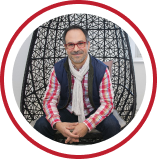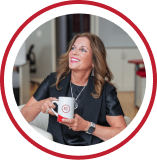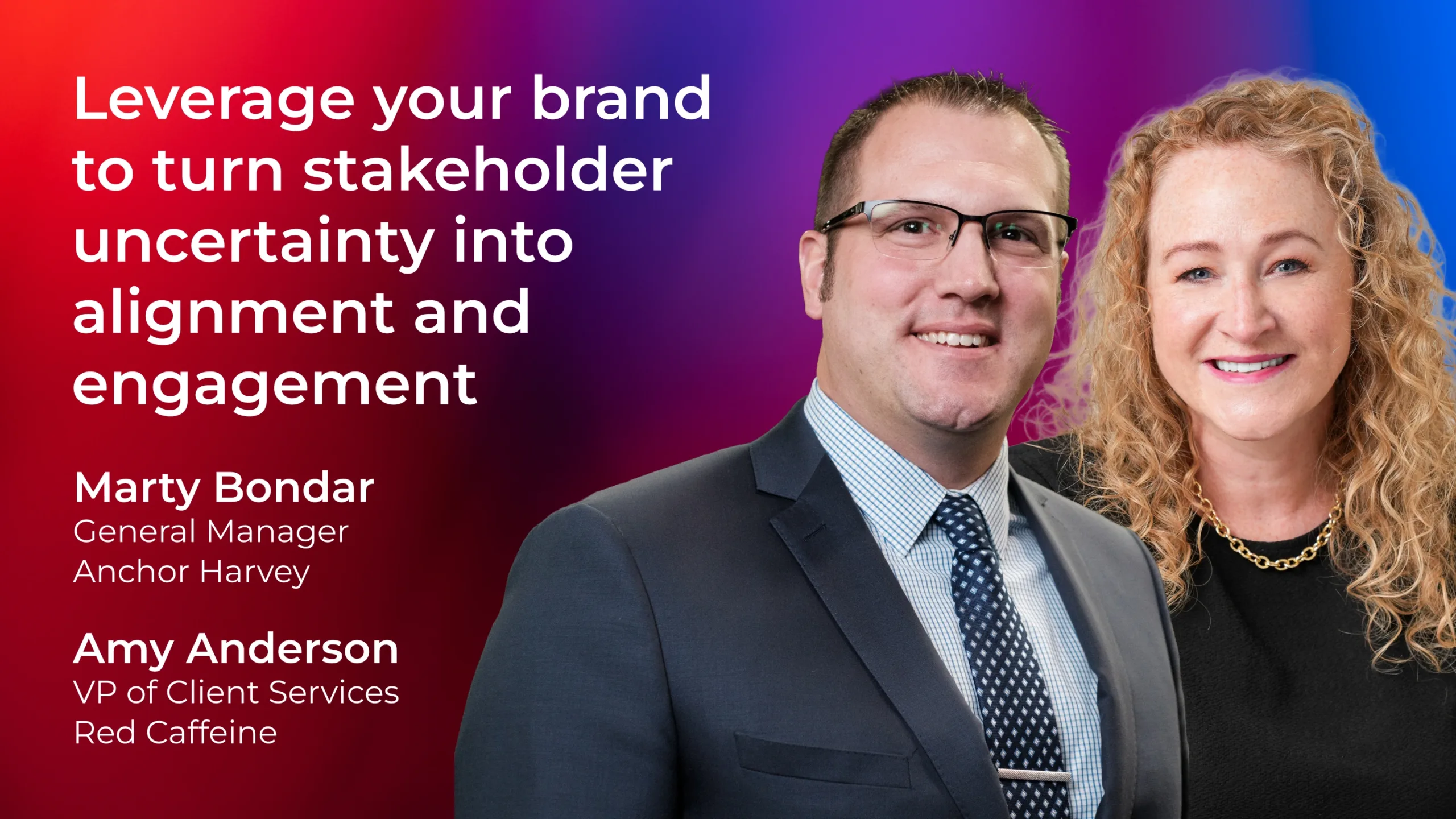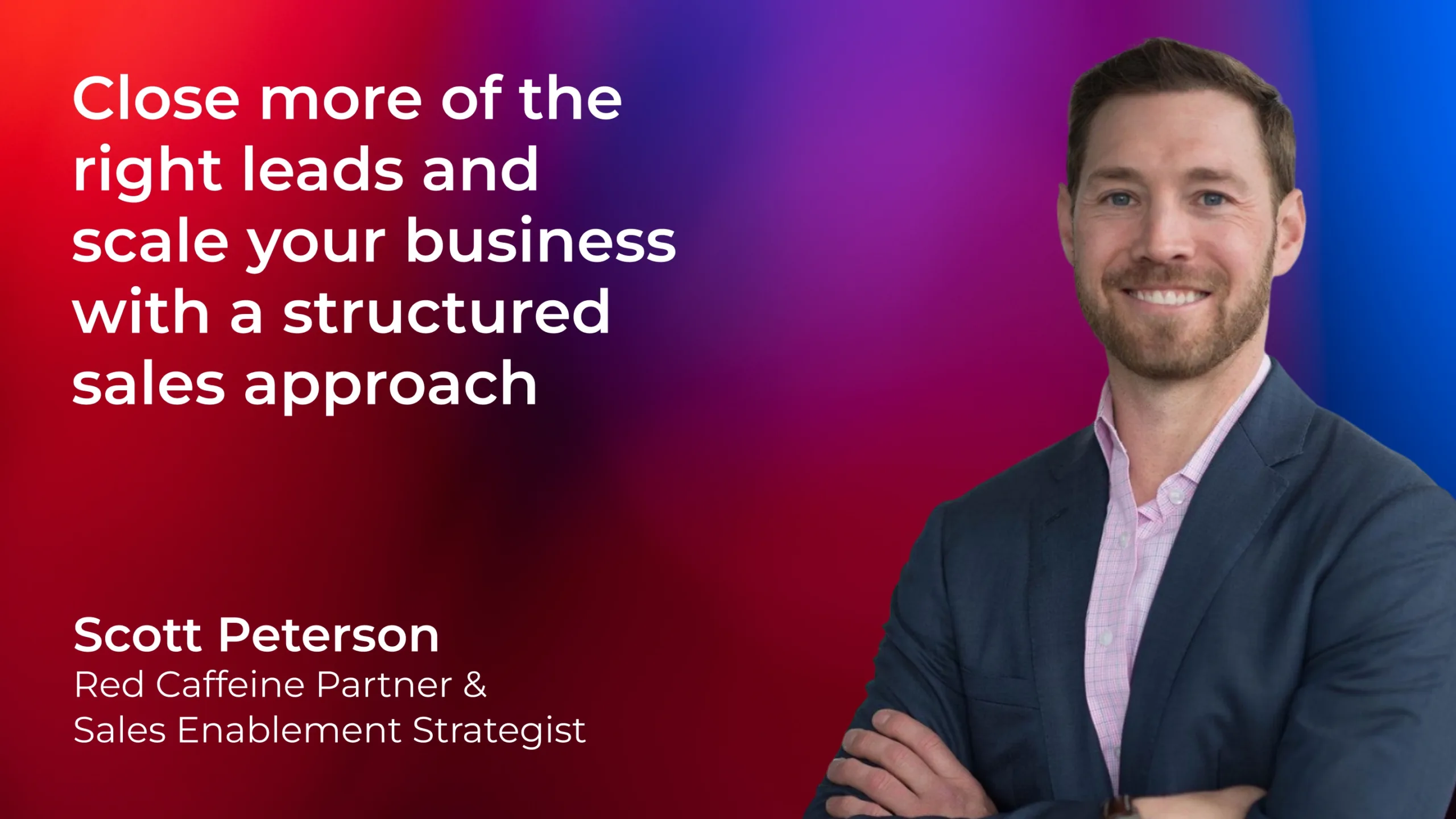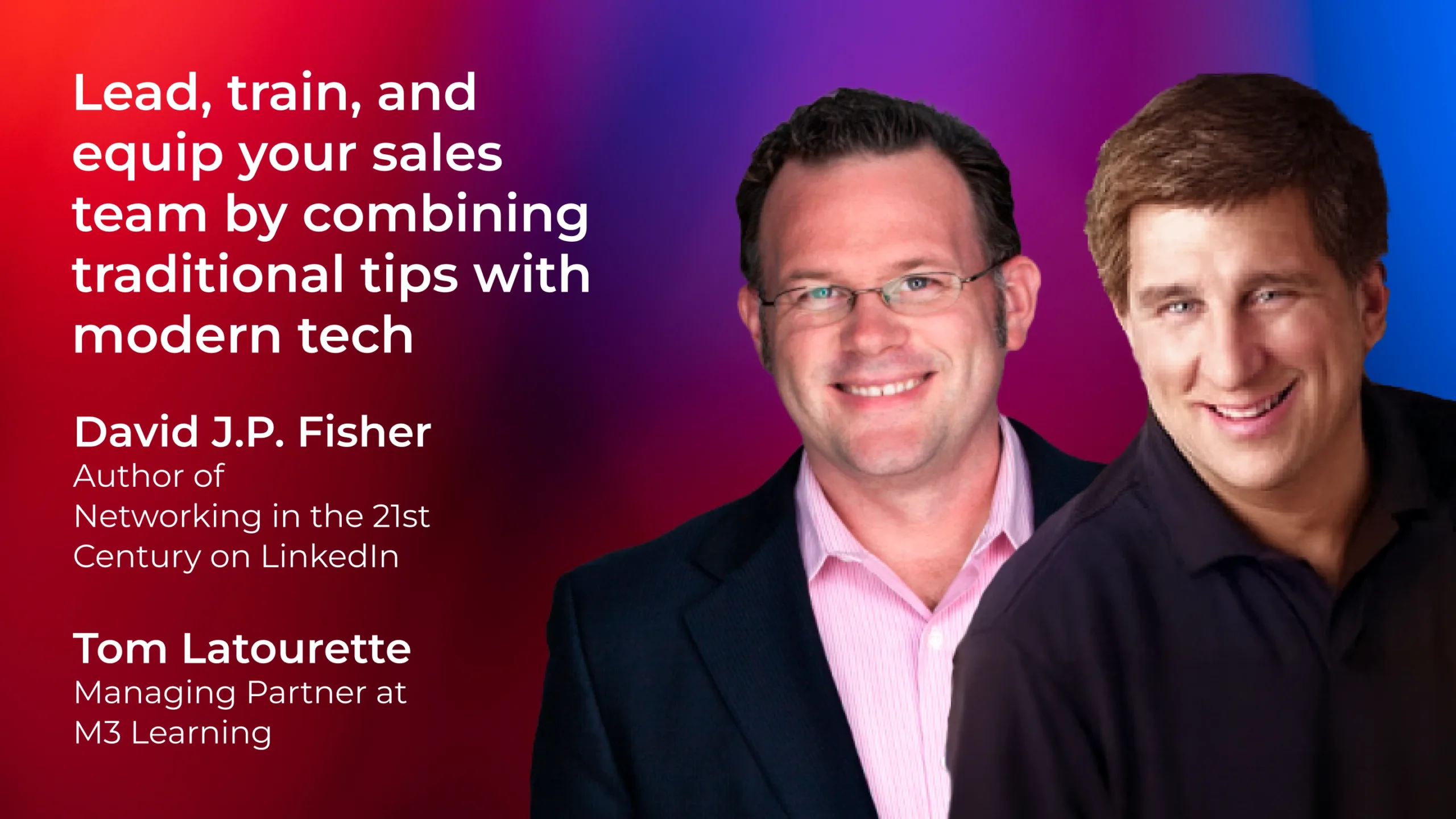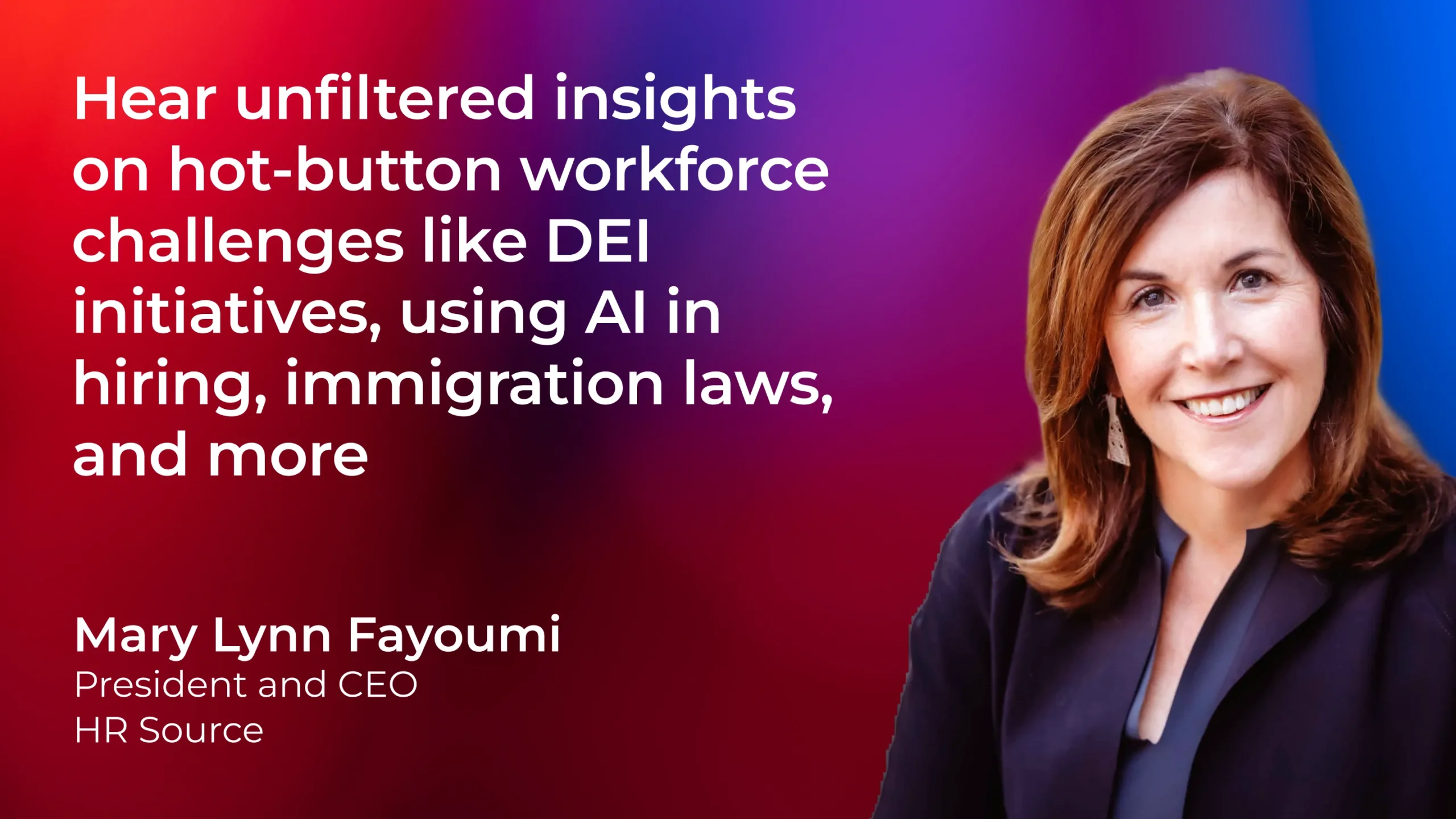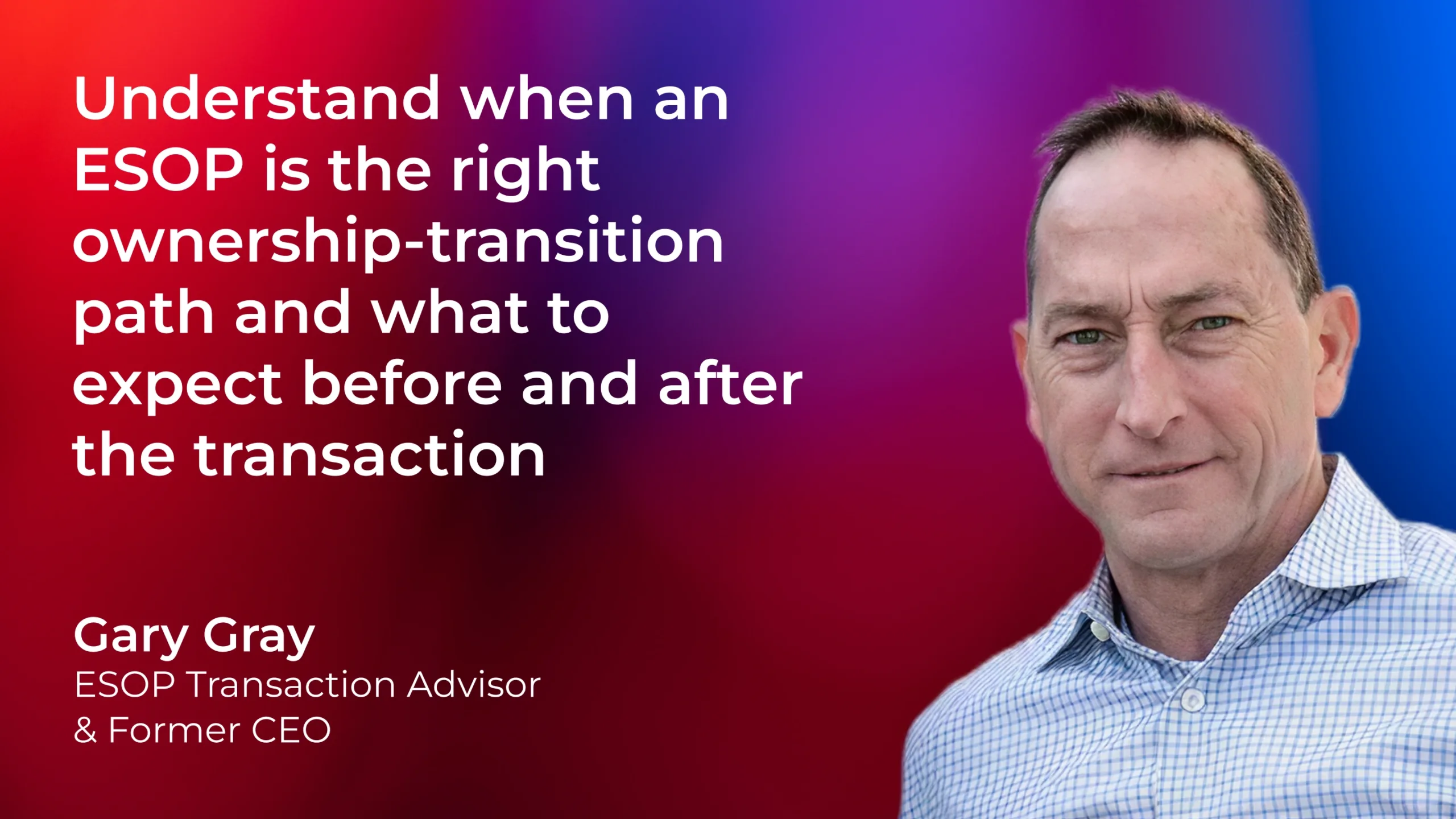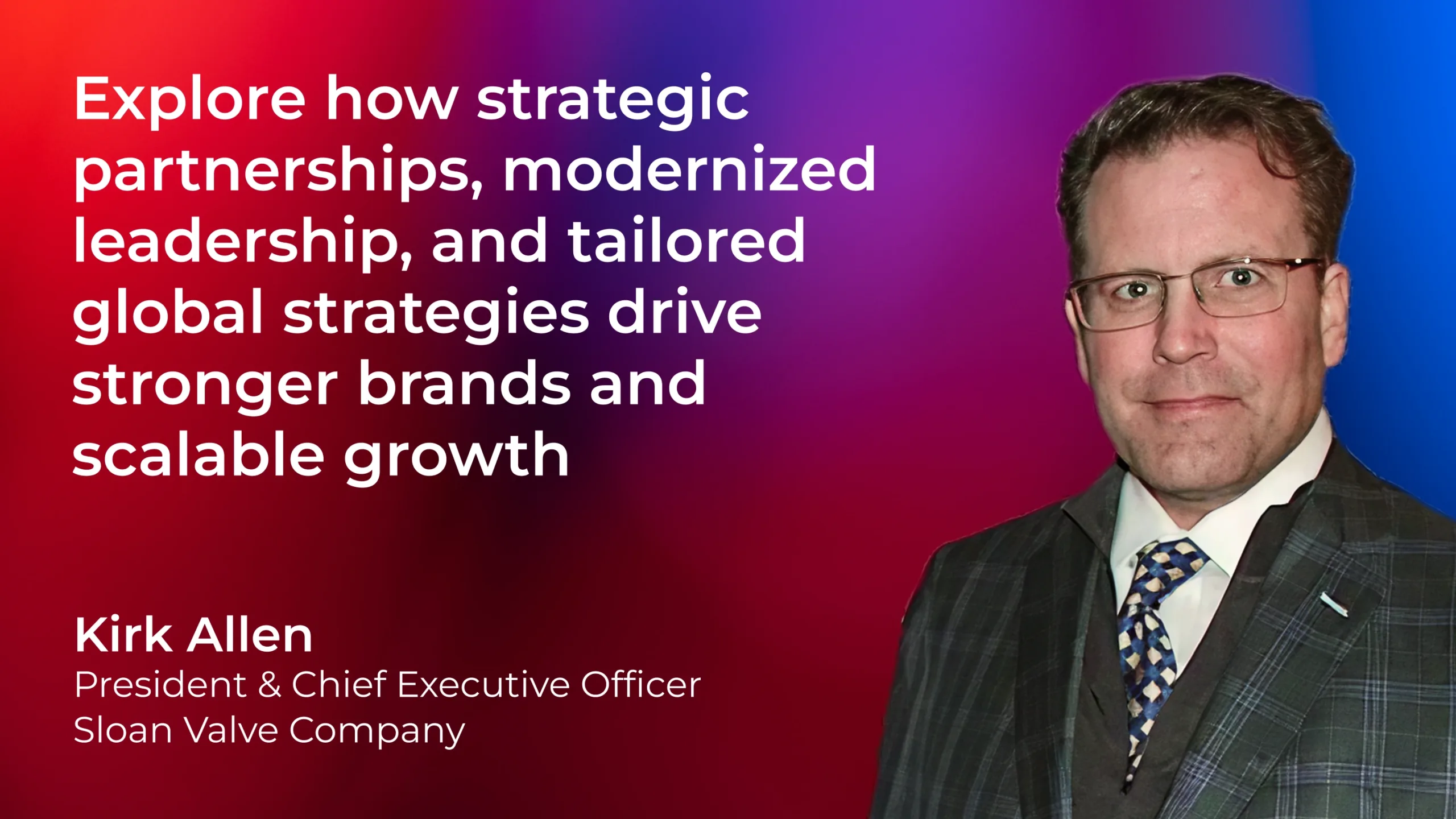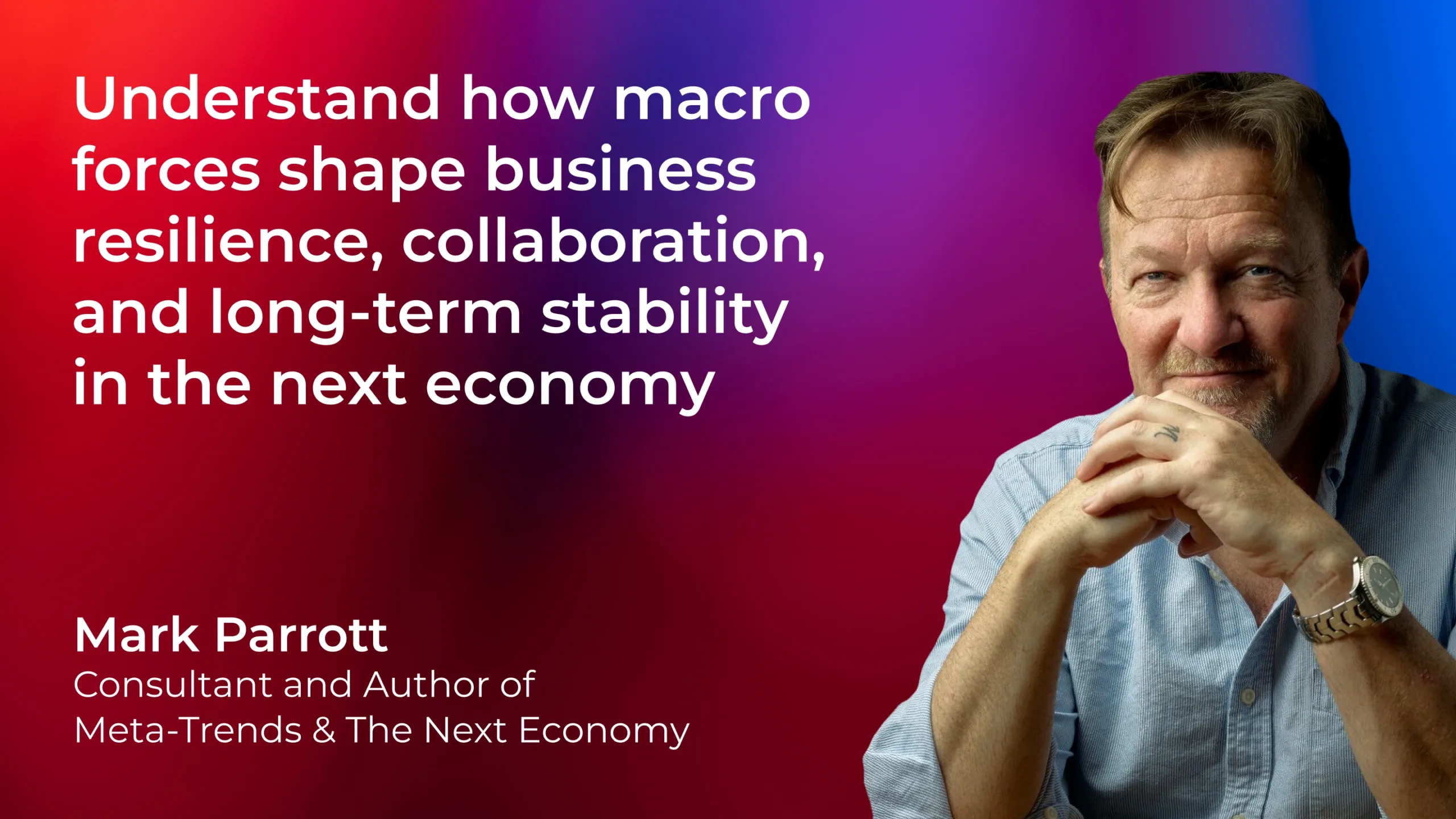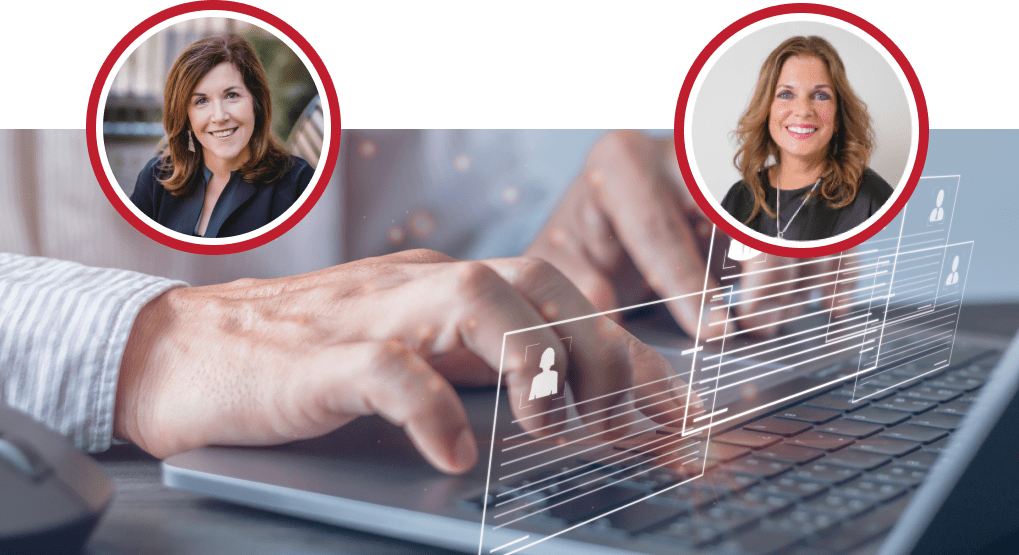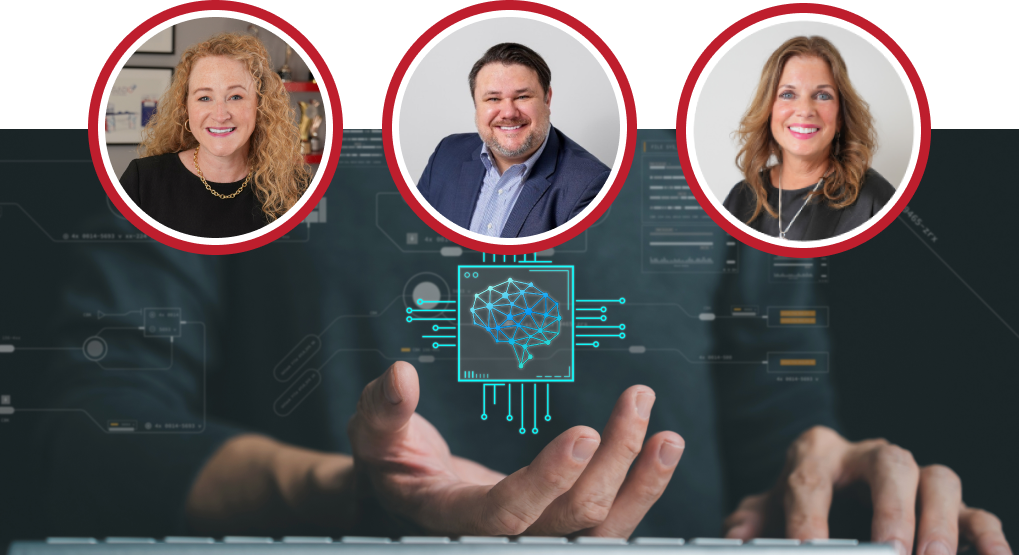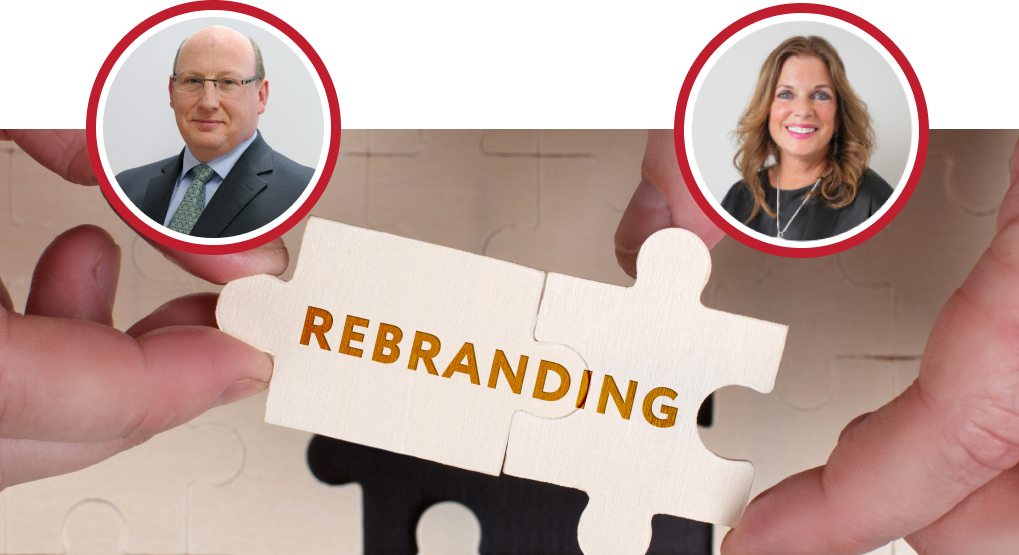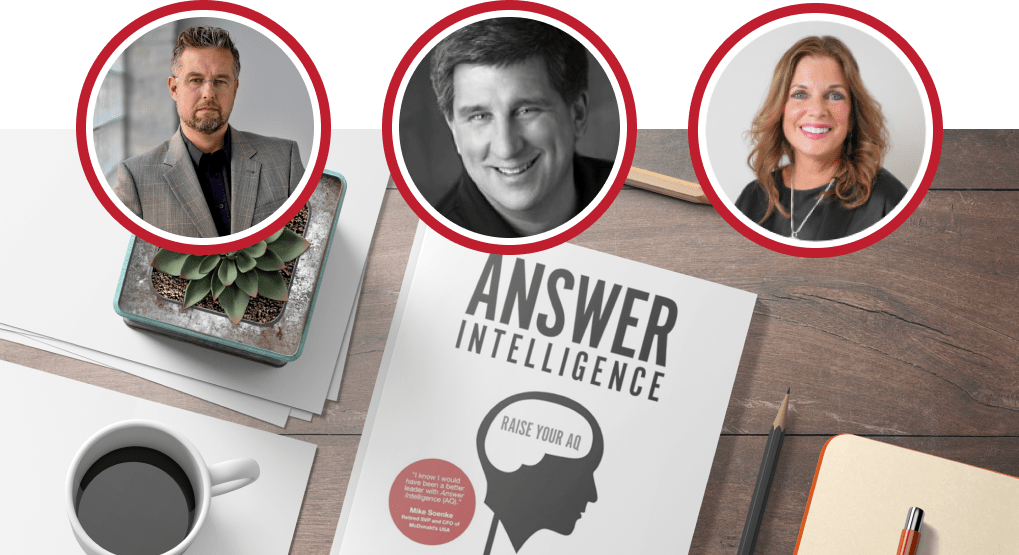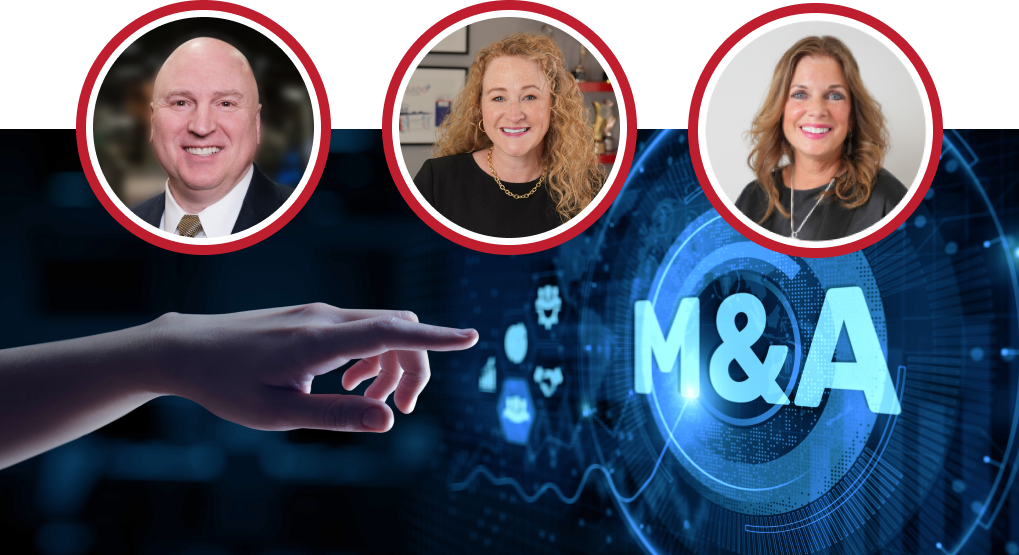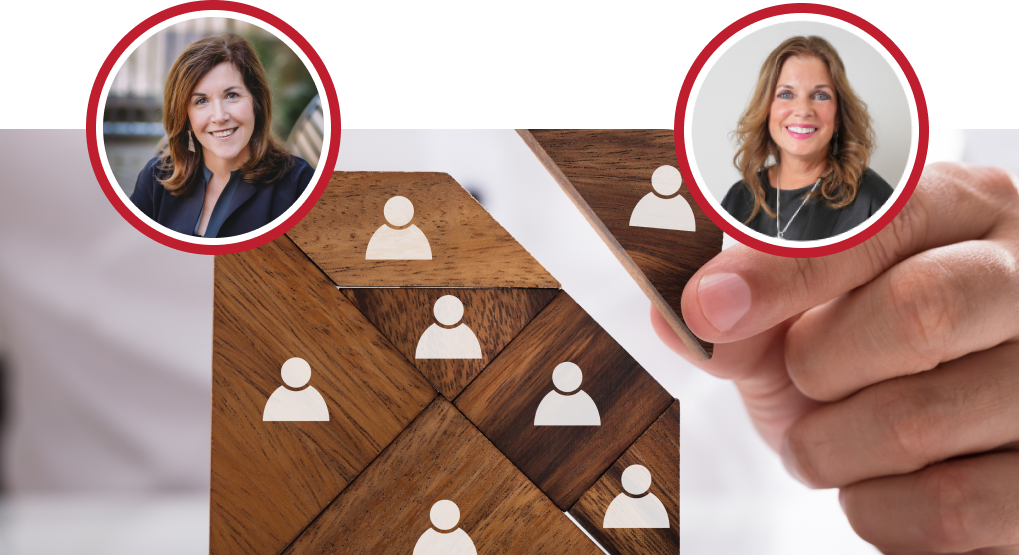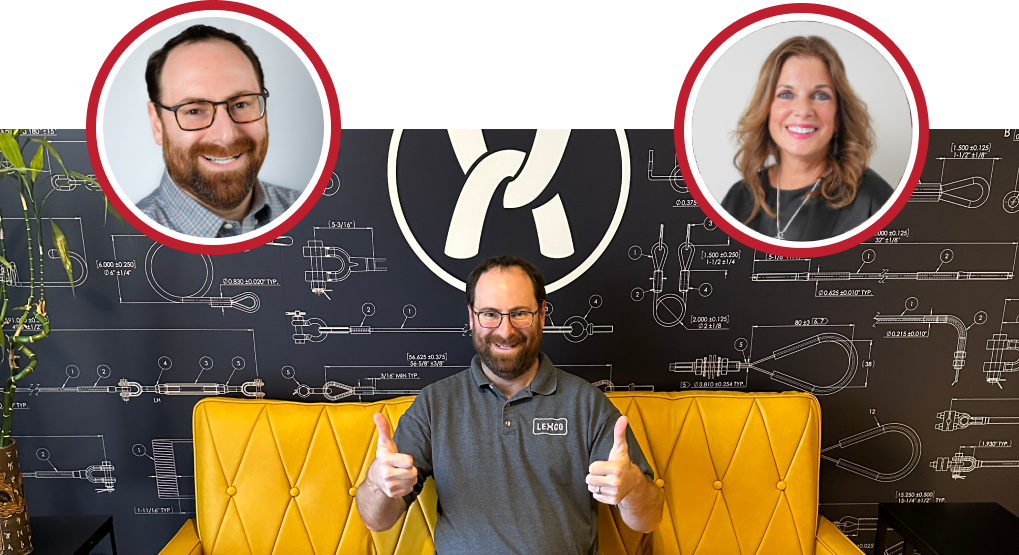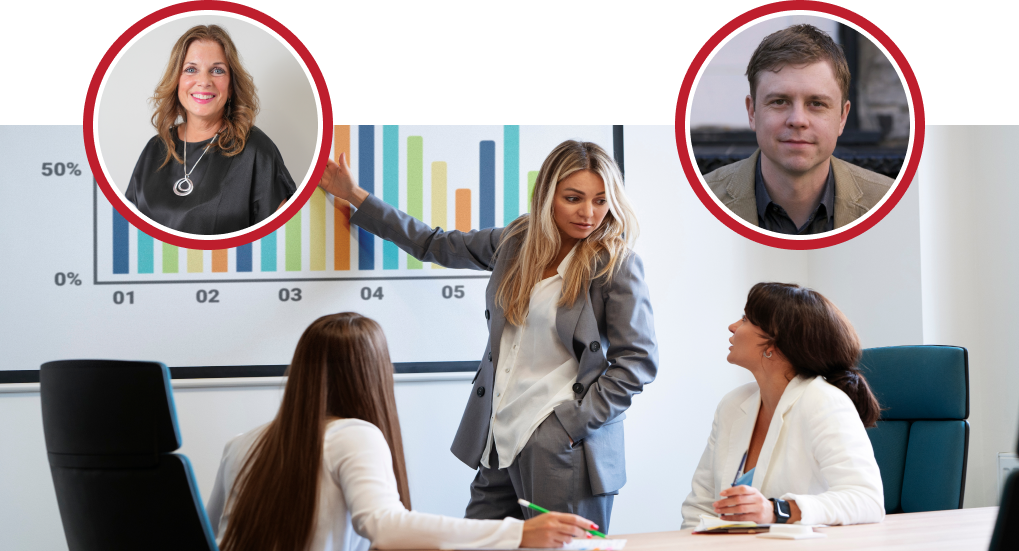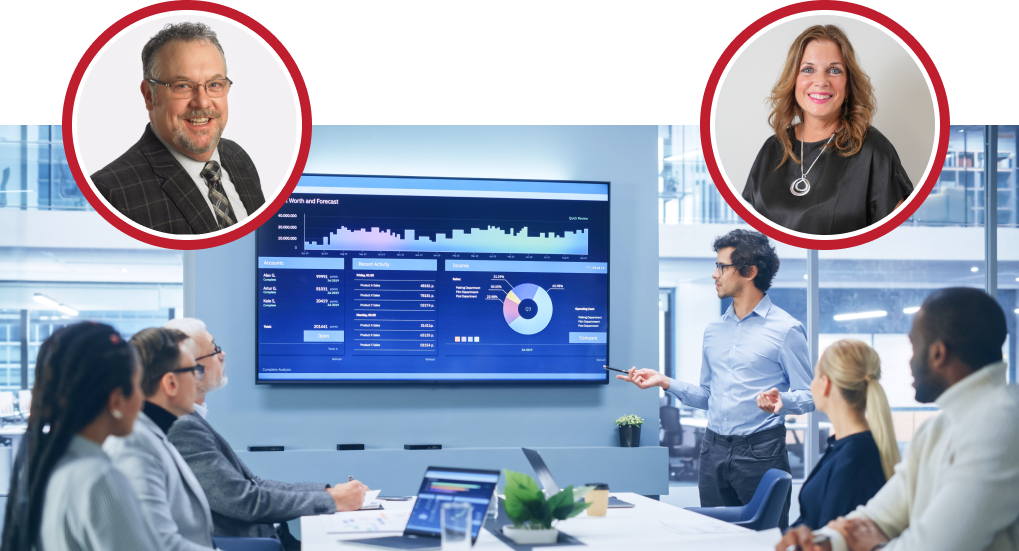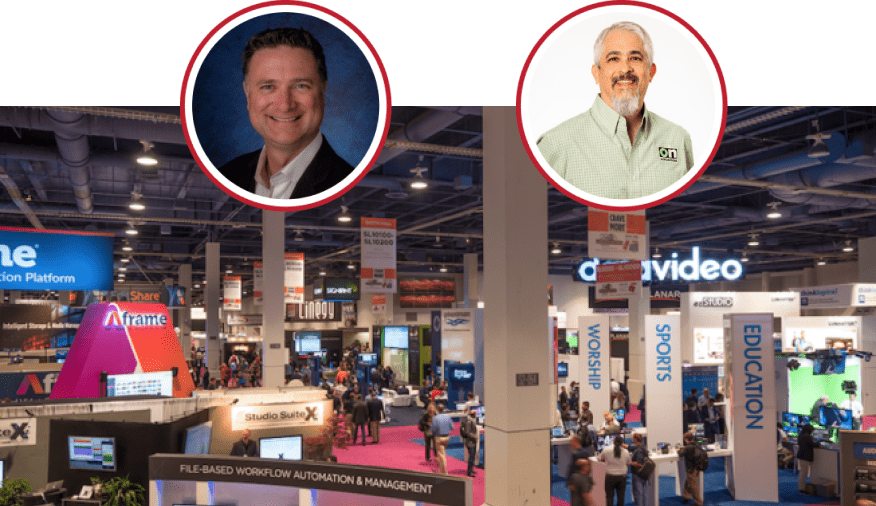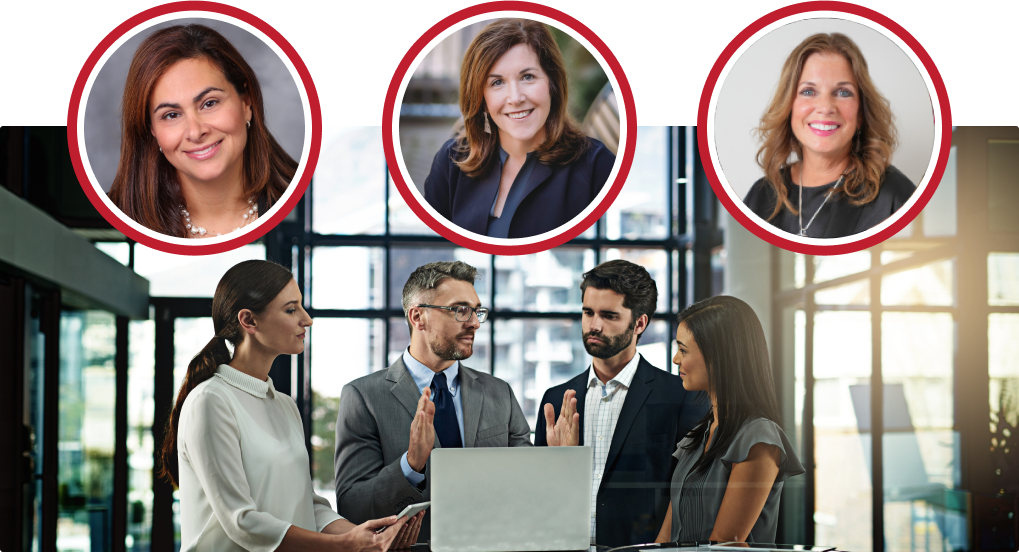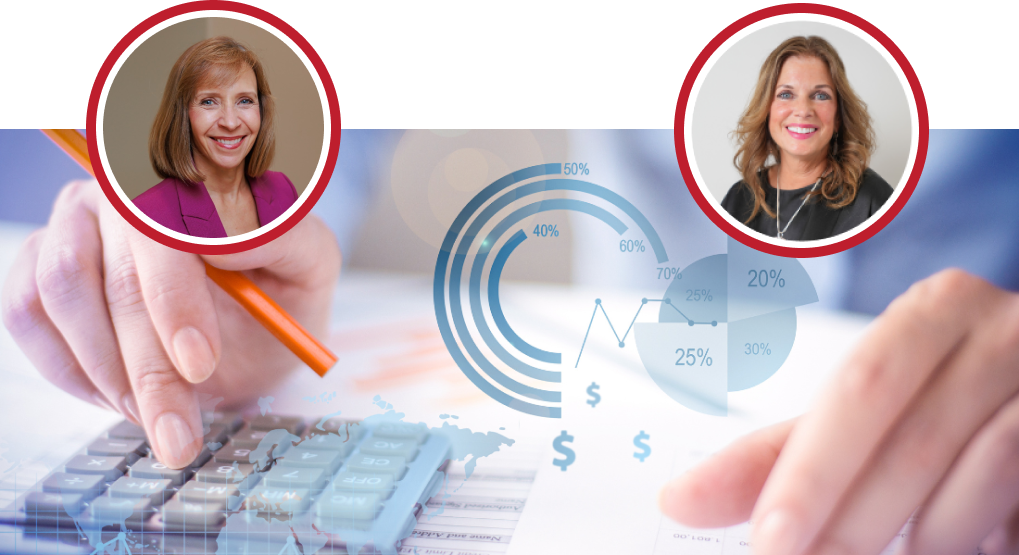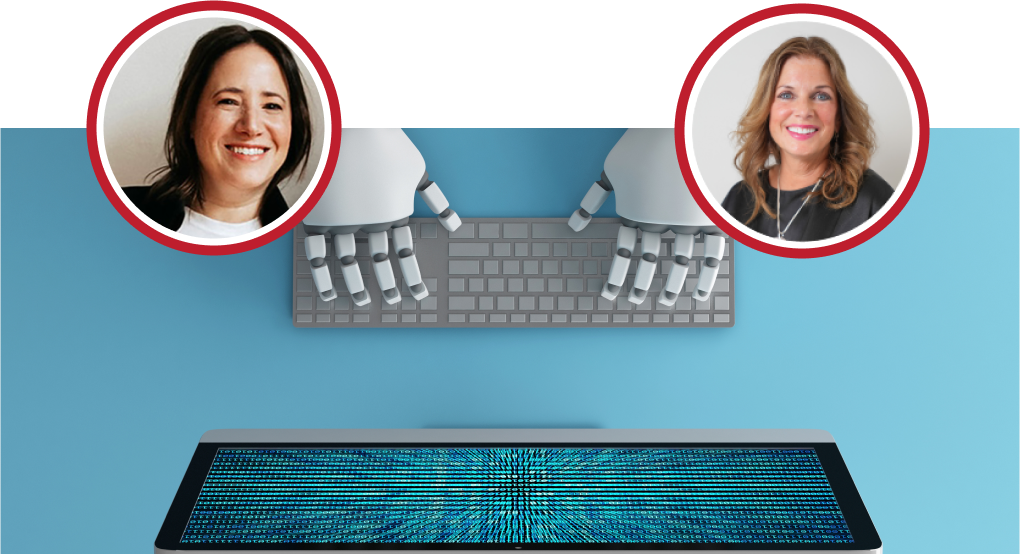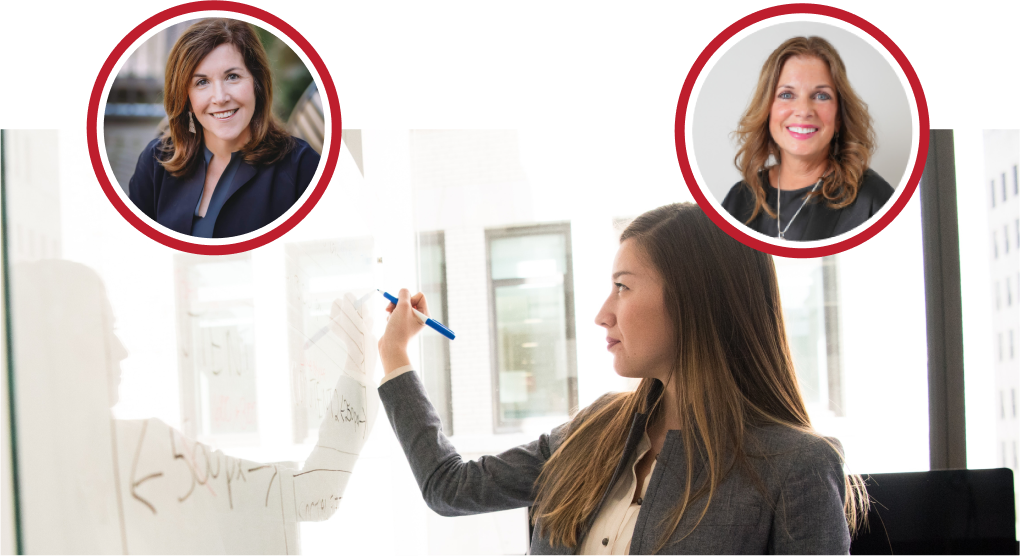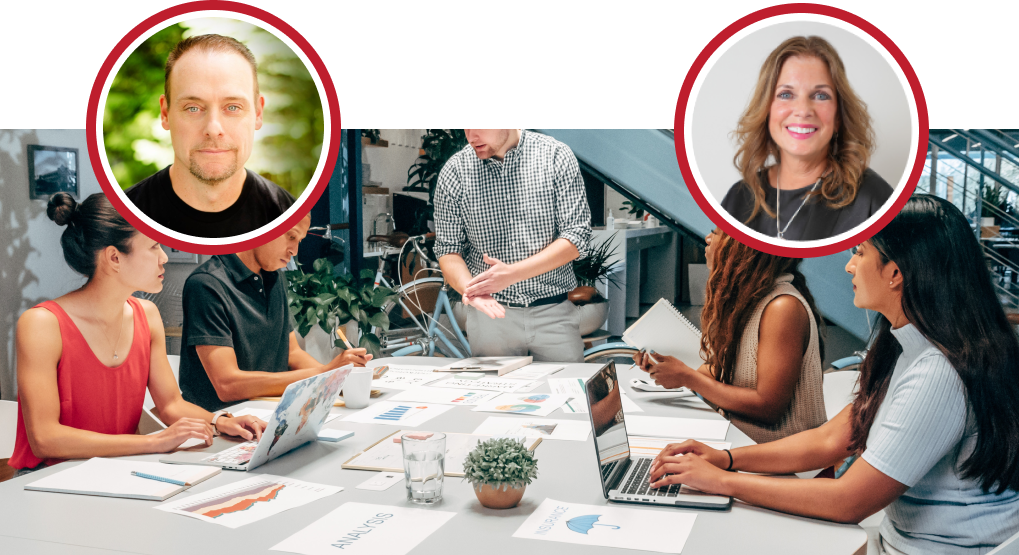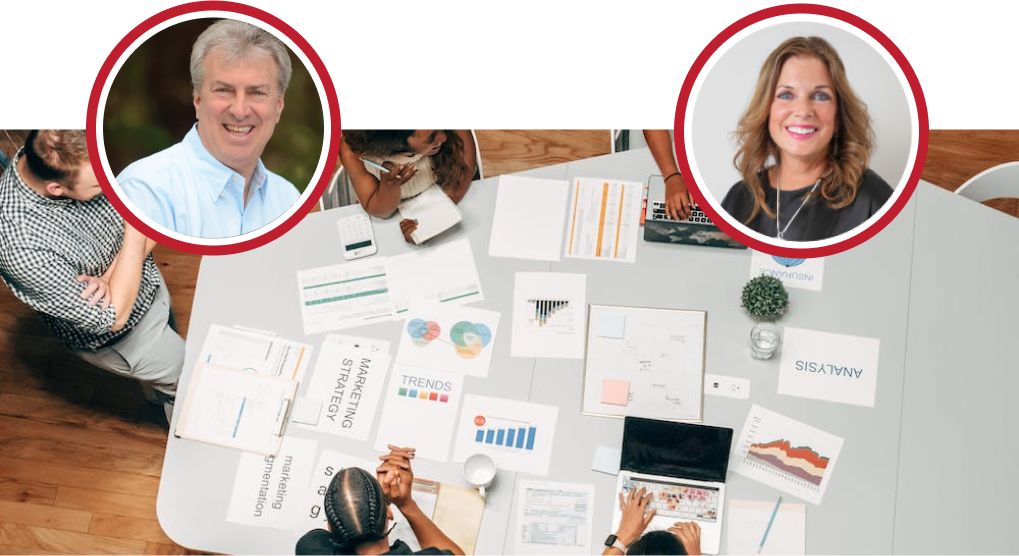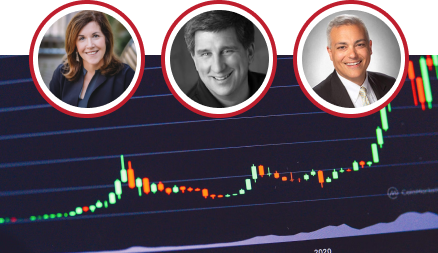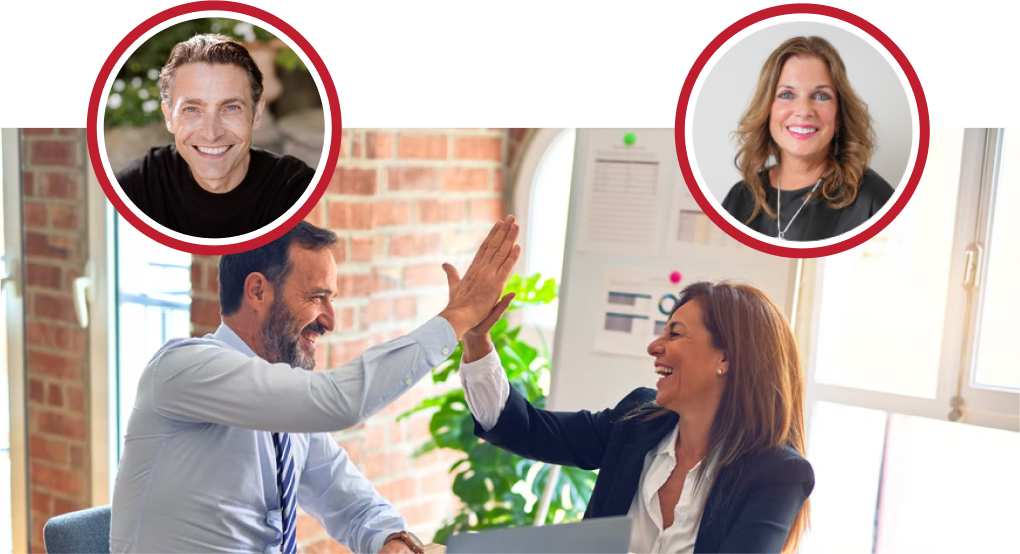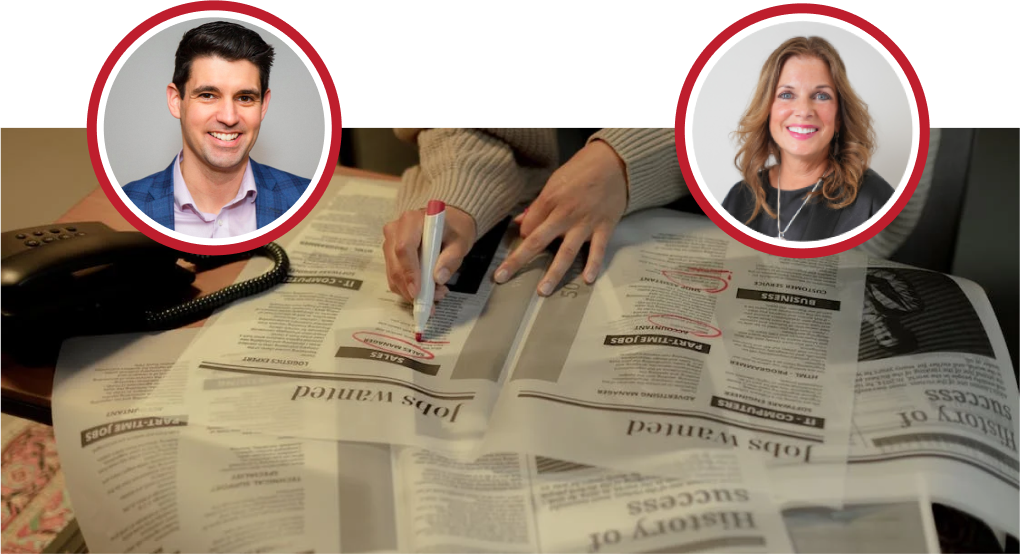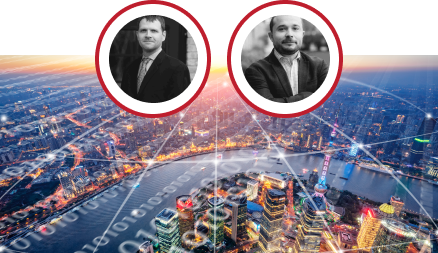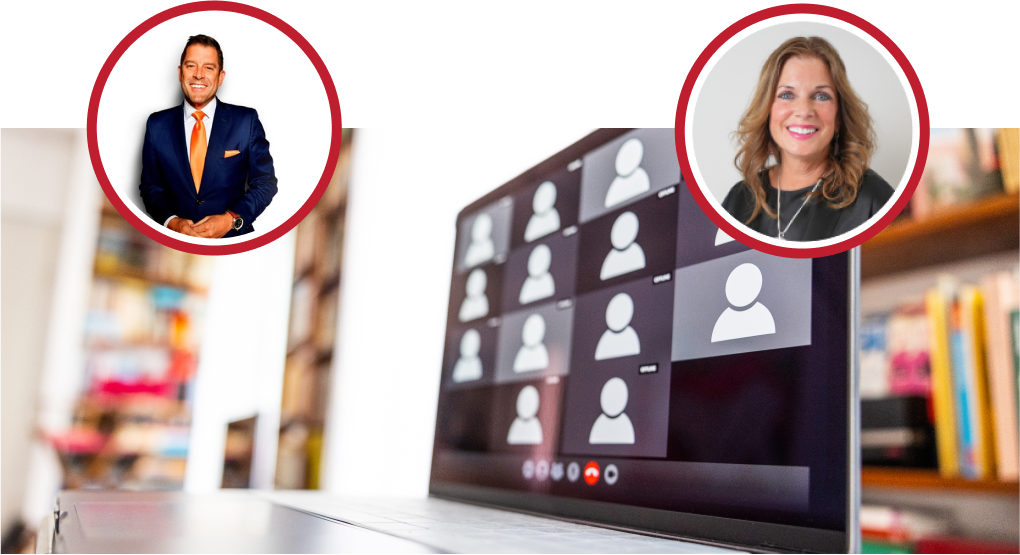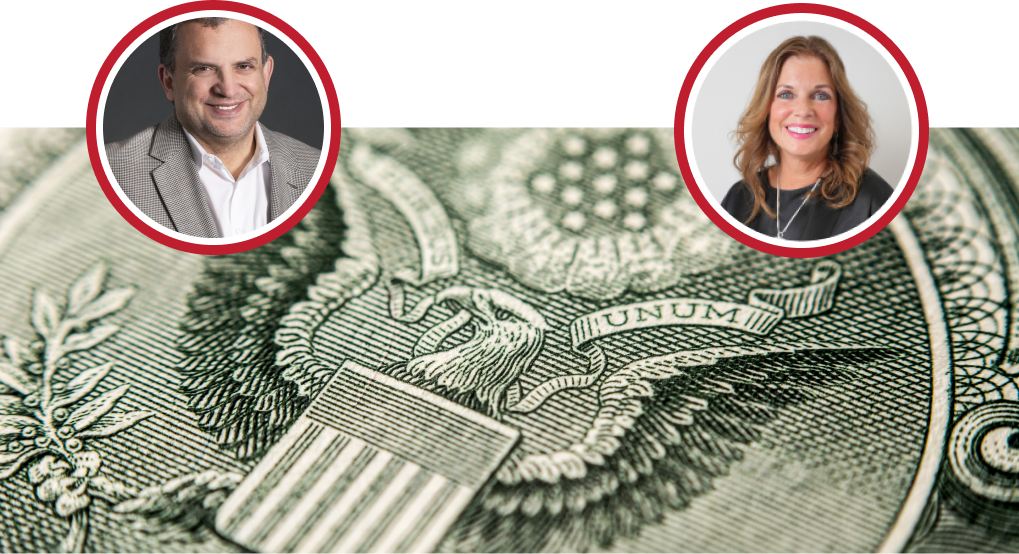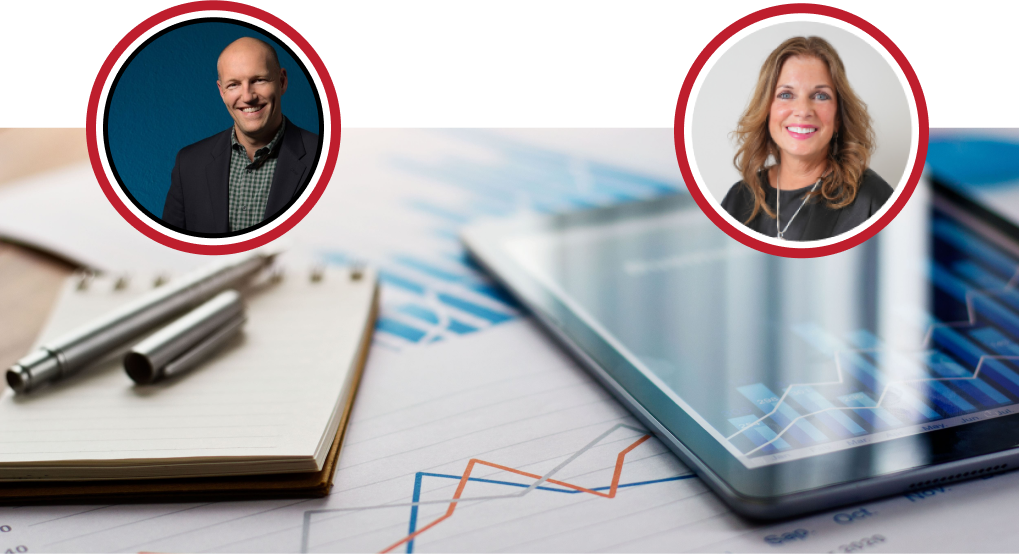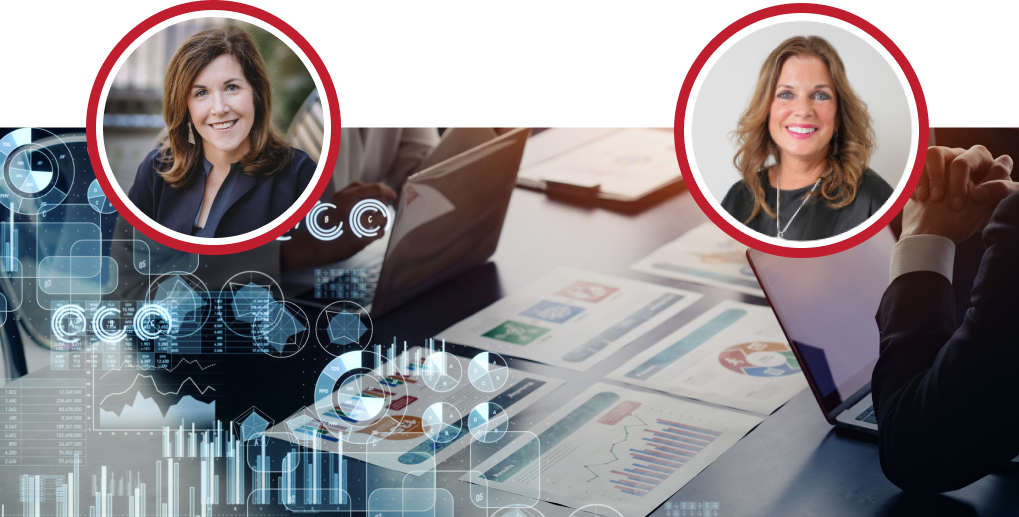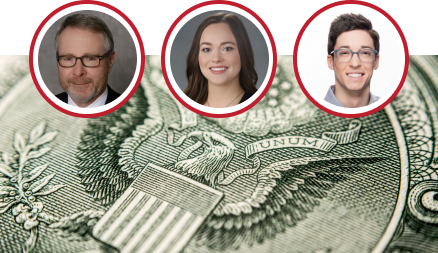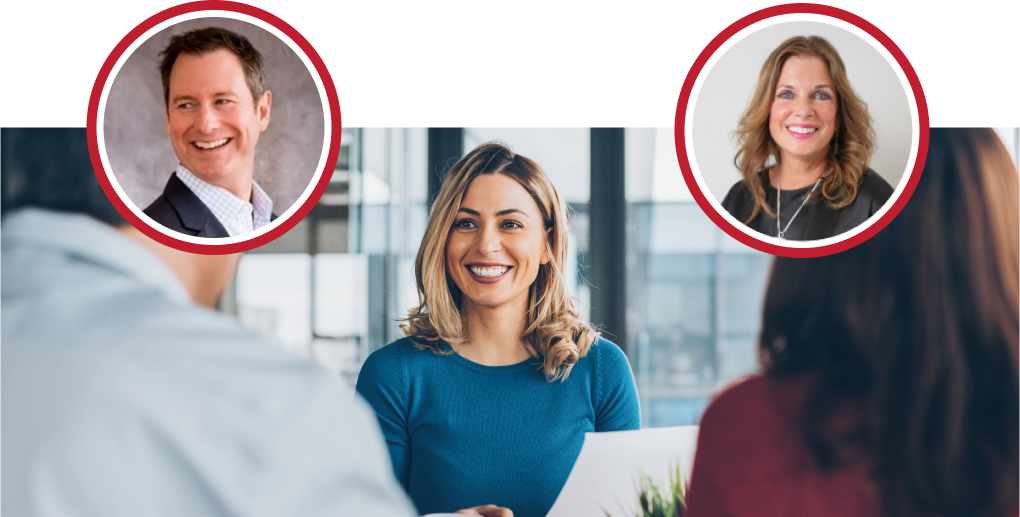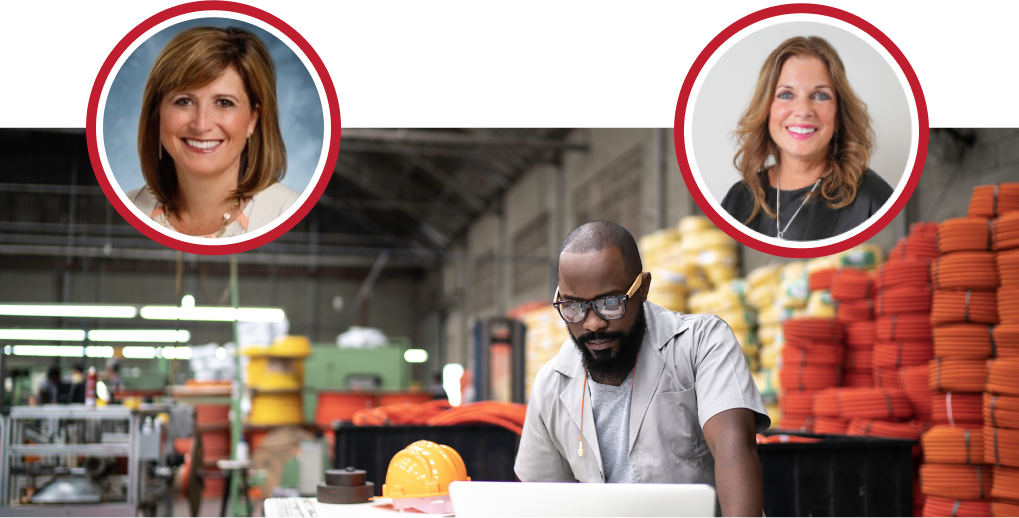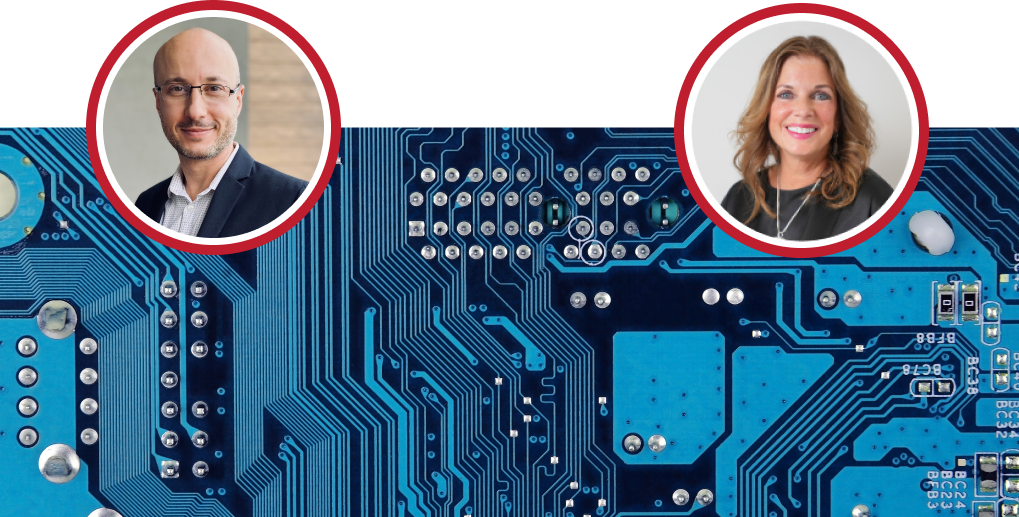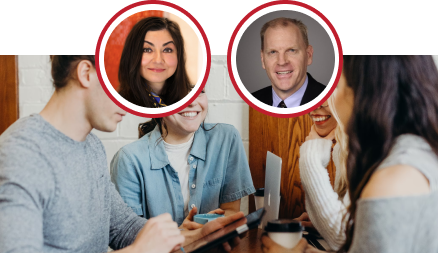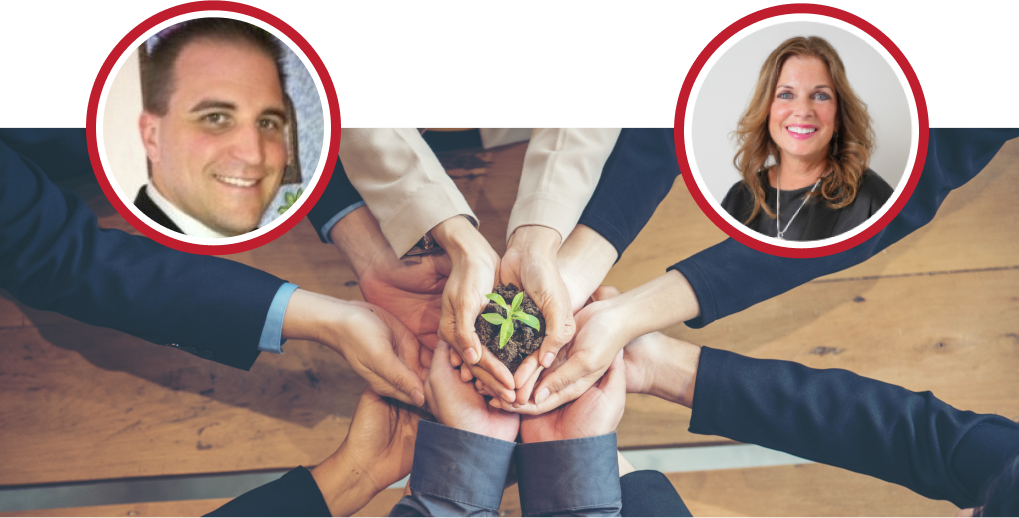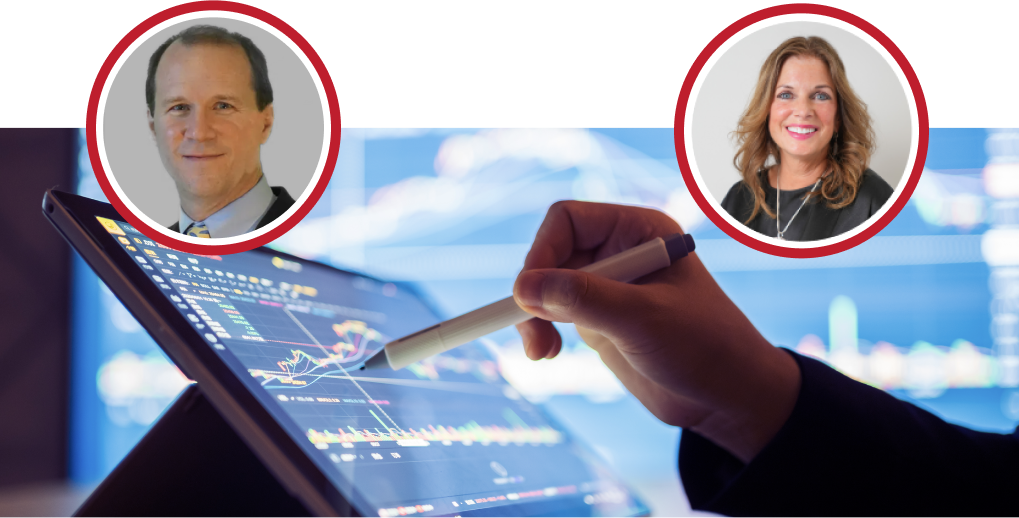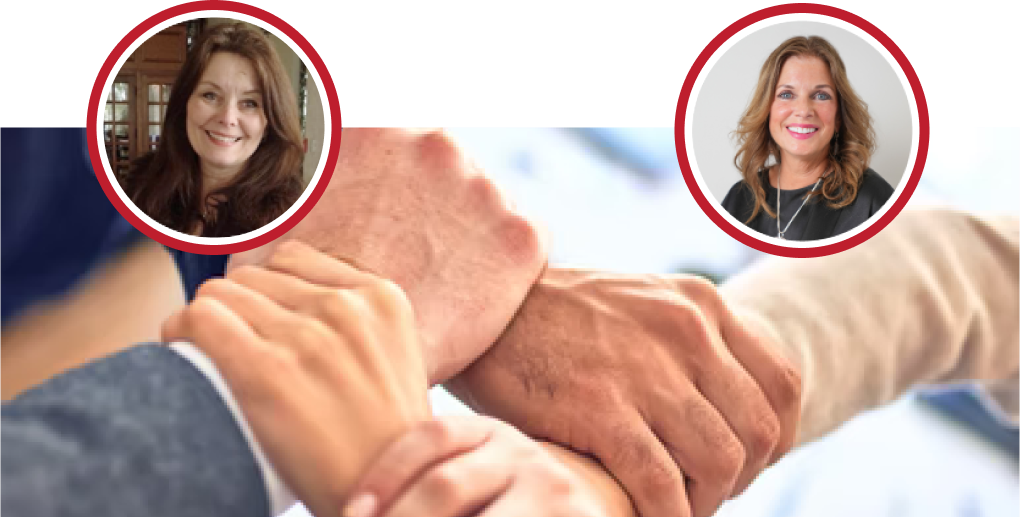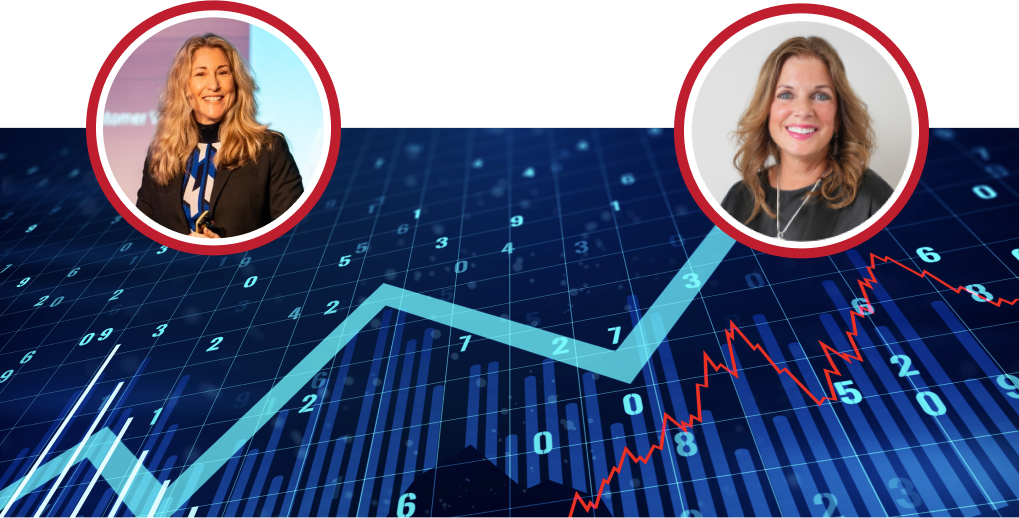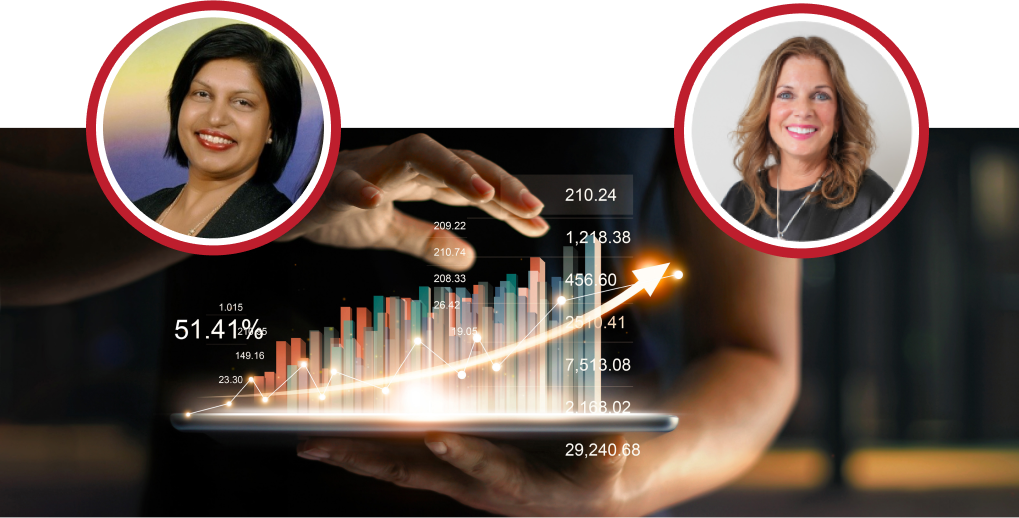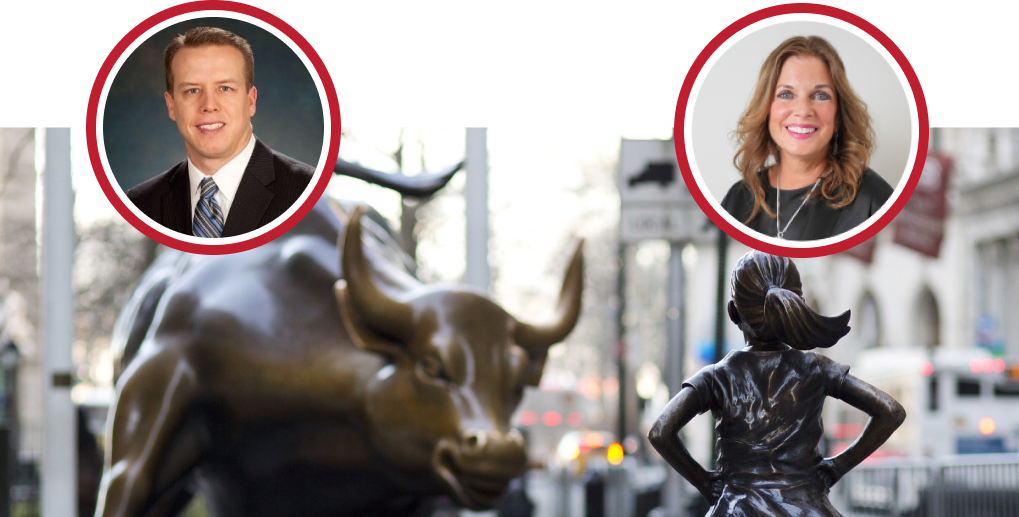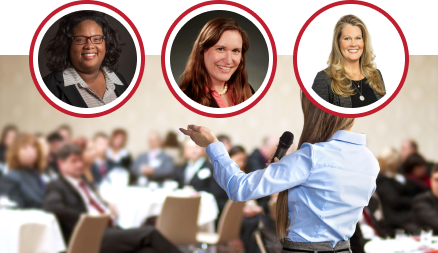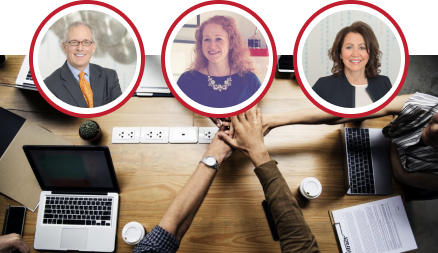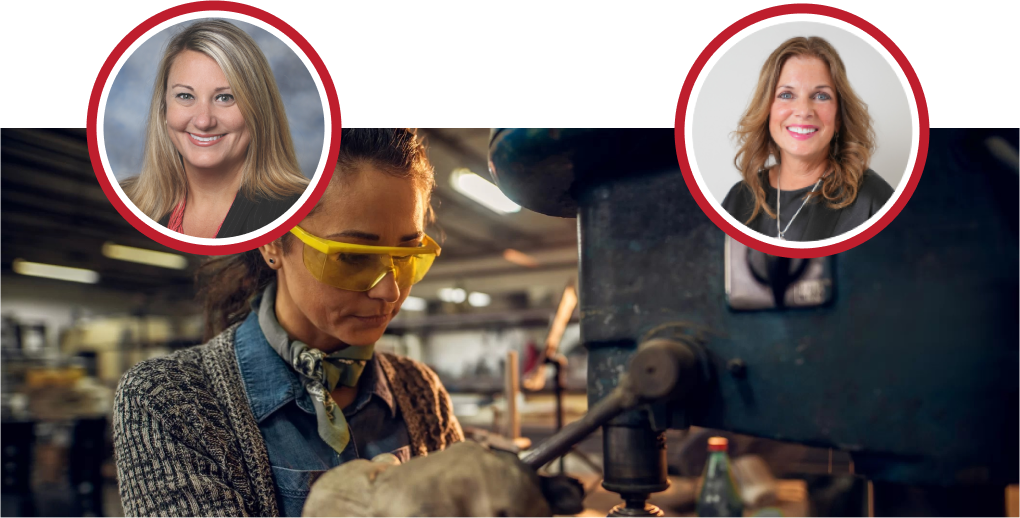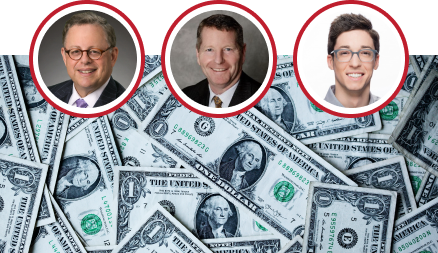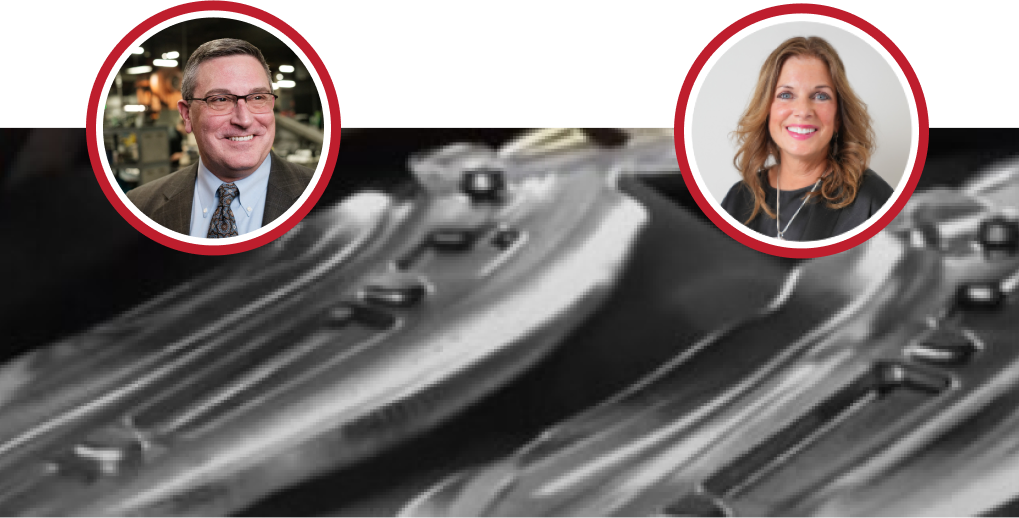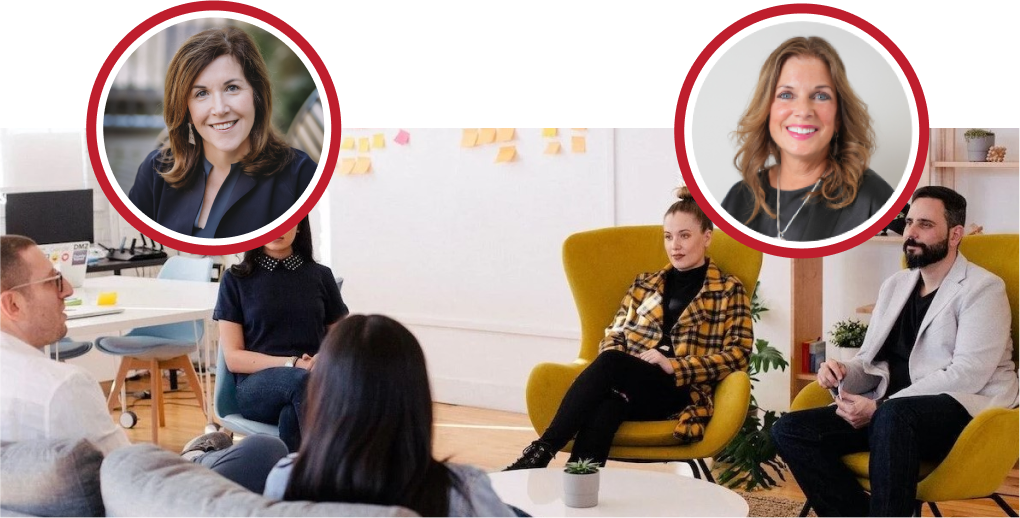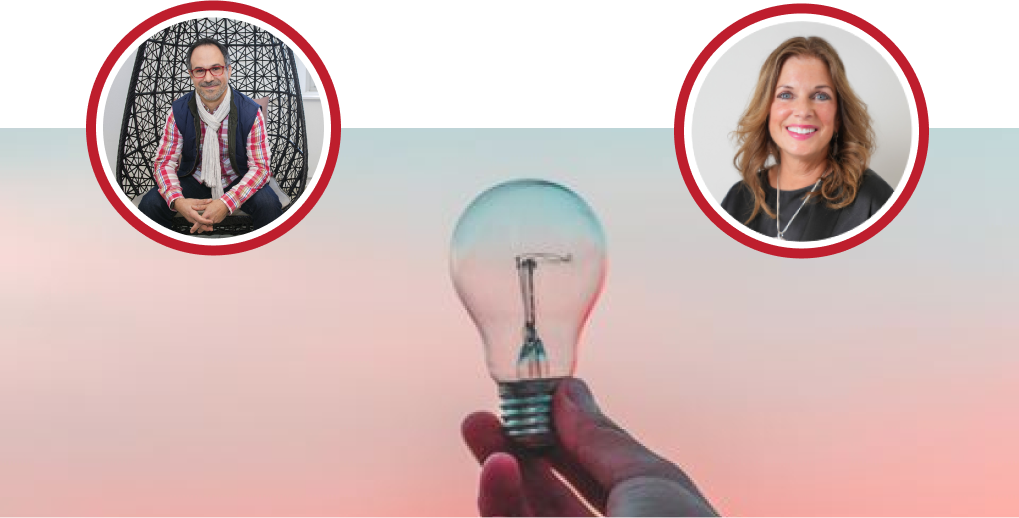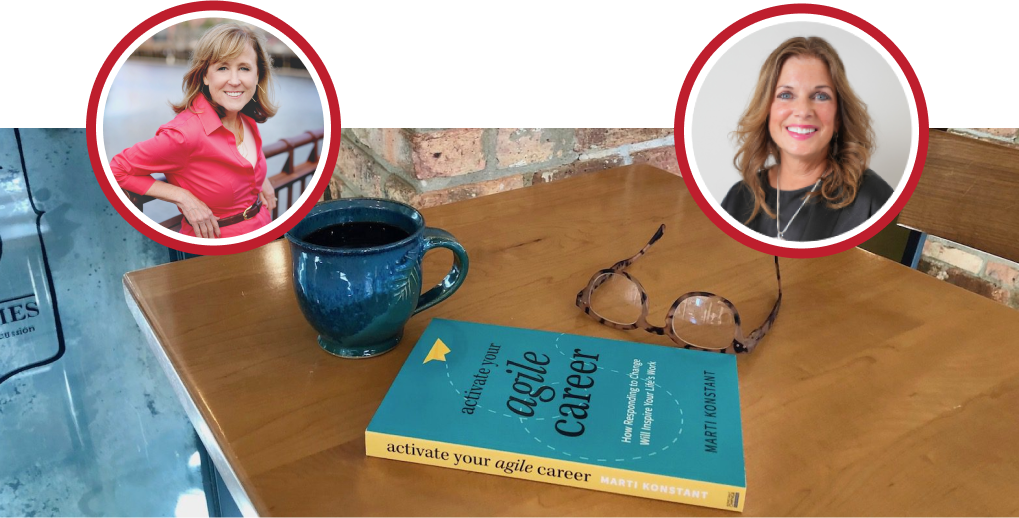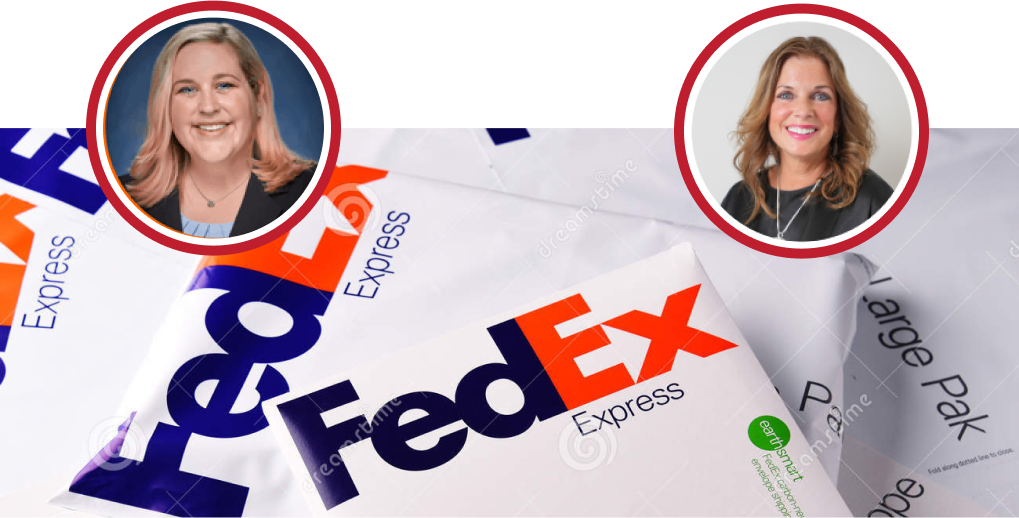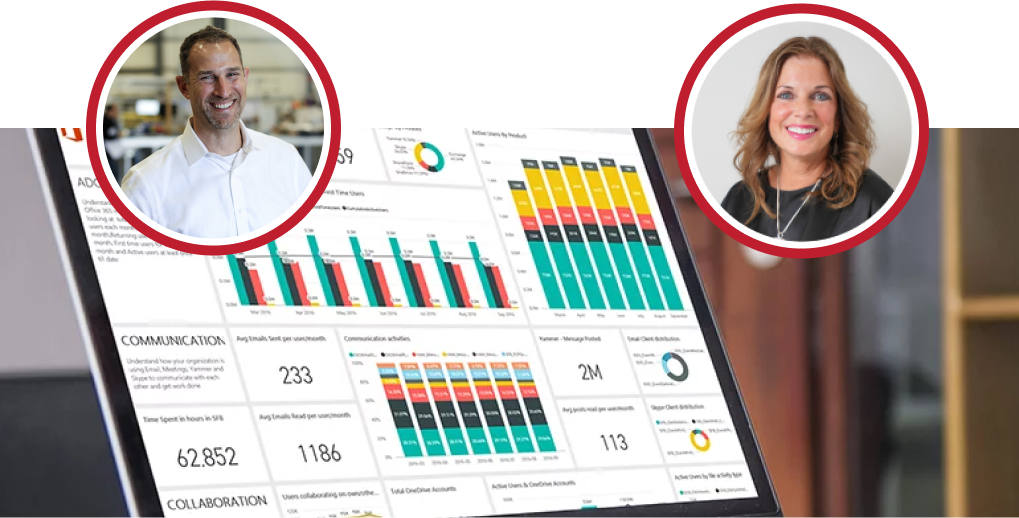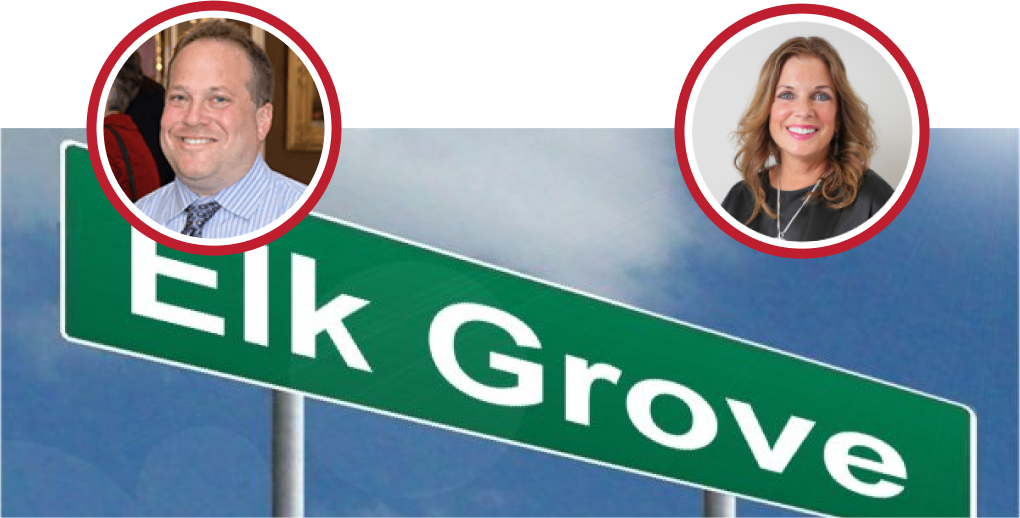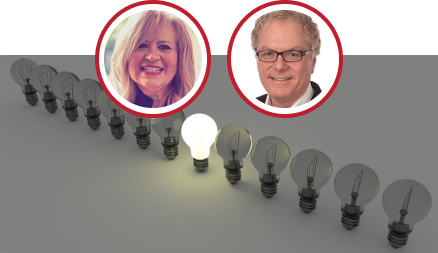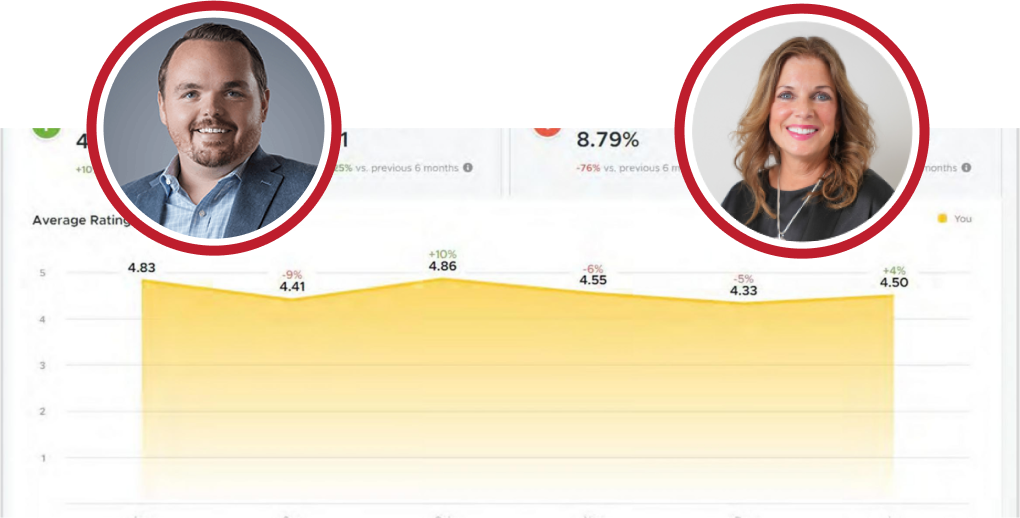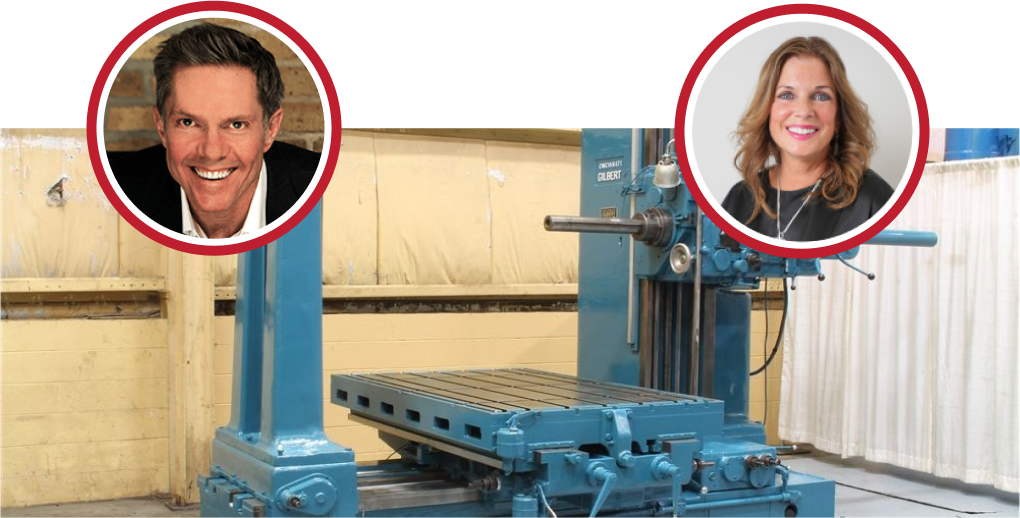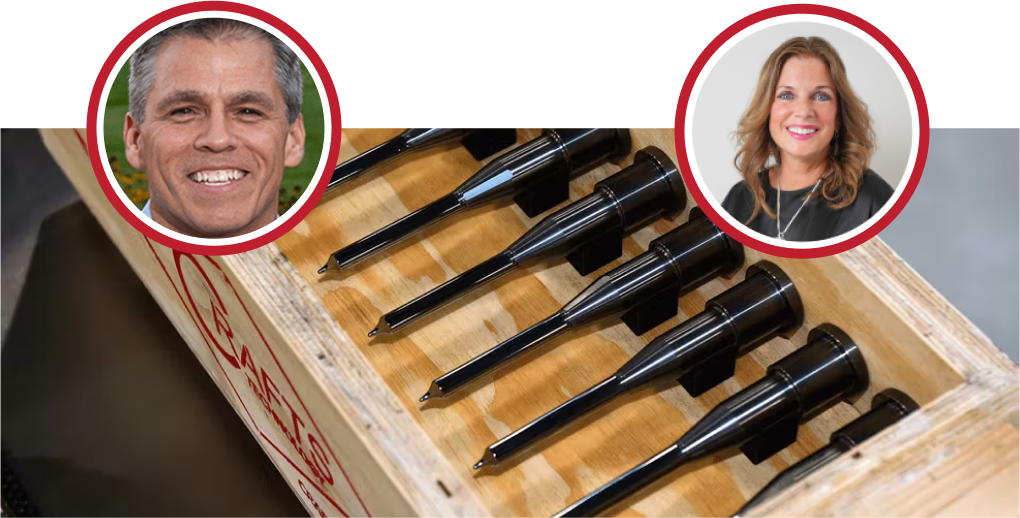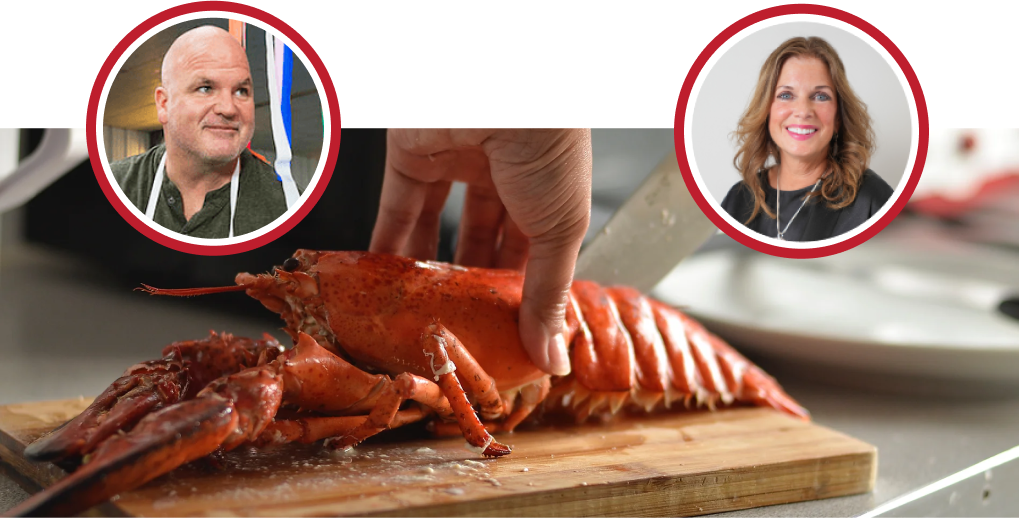Lisa: Well, we’ll go ahead and get started. So, thank you again to each of you for joining today’s session of our “Business As Unusual” webinar series, where we are speaking with badass industry leaders who are helping all of us thrive and survive in today’s economic climate. My name is Lisa Behning, I’m one of Red Caffeine’s account managers, and I’ll be your moderator for today’s session. We are so excited to have our owner and principal, Kathy Steele of Red Caffeine as well as Moises Moreno, the VP of Innovation for Fortune Brands and Moen, as our two featured guests today, and as we build today’s session, we are going to take innovation beyond the buzzword that it is and really dig in to make sure it is a practical application that you can bring back to your company to your role and to your team so get ready and get set to get some great info today as a few housekeeping things we do have all of our participants on mute but this is an interactive session. So, I encourage you, please use the chat function use the QA option, or you can also go ahead and raise your hand in the session if needed; we’ll unmute people but would love to get your questions that Moyses and Kathy can answer as we go through today’s presentation as another note as well we continue to support our restaurant industry during these economic times as they have been so hard hit during the pandemic. So, wanted to give a quick call out to Alex Steve, Maggie Michael, and Robin, who are the five winners of today’s lunch. I know a few of them are still ordering, so we look forward to supporting your neighbourhood businesses. So remember, if you’re one of our first five registrants’ first session, you automatically win a 20 voucher to have lunch at one of your neighbourhood restaurants to continue supporting them; with all of that being said, let’s go ahead and get started with today’s session. So, I would like to turn things over to Kathy and to Moises.
Kathy: Thanks, Lisa and Moises. It’s so we’re so thrilled to have you here today, and I can’t wait to get to dig in. I poured through your bio; you’ve been an innovation leader in so many different for so many cool companies like Allstate and your current role at Moen and Whirlpool, but you’ve also been featured in some books; I’m familiar with the midnight lunch because we did some work with Sarah Caldecott with a couple of clients a few years back. So, really excited to have you here today, but could you tell us a little bit more about your current role at Moen and what it means to be the VP of Innovation?
Moises: Hi, thank you very much for the invitation. It’s a pleasure to be here, and I always like to share my experiences. So, thank you for that opportunity some people might not be familiar with fortune brands, so we are a company that is a brand that probably not a lot of people know, and we are a conglomerate of businesses in the home space actually fortune brands has gone through many iterations at some point. We had Titleist golf balls, and we had to be spirits, and over time has evolved, and now it’s really a home equipment company within fortune brands. We have what used to be Moen which is a plumbing group that actually has been renamed to the global plumbing group because now we have a set of brands that give us access to some other markets that we didn’t have access to before so within the plumbing group El Moyne, I’m the VP of innovation. I’m part of the Chief Marketing and Innovation office, and my goal is to enable the organization to be innovative. I see my role many times as a behind-the-scenes guy that is just making this happen, even though I also have a responsibility to infuse some of the new ideas and advance those ideas into the funnel. We’ll get into that a little bit later, but that’s it. I’ve been here for just over three years, and I have enjoyed it quite a lot until now.
Kathy: Yeah, so I think it’s it seems like it’s a newer title. I think organizations have been using innovation forever, but I don’t know that they’ve always been calling it or had a dedicated group of resources to innovation in their organizations, but could you just tell us a little bit about sort of your like what was that journey? And what were some of the key roles that you’ve held in your career journey that became what led you to become interested? And the skill sets you’ve used to lead innovation teams and innovation at organizations?
Moises: Yeah, it’s a relatively new function in many companies. I think one of the power news was Whirlpool that had a first time innovation lead and that’s in less than 20 years but really people come from different angles in different functions to innovation roles but I think on the personal side has been a journey that obviously I never anticipated I started my career as an architect actually back in Mexico City, where I’m from which is basically a design career you’re understanding consumer needs and understanding how to translate those into a real object where people are going to live then my interests and and connections in career path took me to do a Master’s in Computer Science that shifted my career to being or working for IBM in consulting services for a number of years and then I did another shift which was a to study an MBA, a business degree when I came to the us and I went to pursue university where my daughter is going right now it’s funny 20 years later and after that I joined Liverpool and my goal at the time was to be a General Manager in the business and and I was going through my checklist of all the roles that I had to do that everyone advised me to do all you got to do sales you got to do merchandise and you got to do all these different roles so you can be a good general manager and I found myself in that process a little frustrated at some point because I remember being in sales and and always going through every Monday the SNLP meetings telling asking people asking me how are you going to increase your numbers how are you going to get more product out the lower and in my reflection at the time was well I cannot create more demand the only way to create more demand is if I create something that people really want and that was kind of like the the spark that drove that desire and at that time grouper was going through this big transformation. So, I went in and got trained got myself trained into the process and became an innovation mentor that we had a program at the time, and little by little, I just migrated into that in a full-time capacity, and I run that role the Global Innovation Director for several years and then I made a commitment to that career in this past and really become an innovation expert, so that led me to a very different industry like insurance with all states and now with Moines. So, that’s a little bit of the journey, and I think this integrity innovation has also been a very transformative journey. I’ve been touching many different roles in the industries.
Kathy: Well, thank you, thank you for sharing that exciting, and I think it’s really interesting about sort of touching different parts of a business because I honestly do believe those are foundational building blocks that allow you to be innovative and so the question I’m going to get to is we all want to be innovative in our organizations especially when you’re in a leadership role you might be a visionary leader that has a lot of big ideas, but those big ideas go nowhere. If there’s no framework or process for getting something from that idea stage or increasing numbers, how are you going to do that? Let’s use some innovation around getting more market share getting more customers? So, can you step us through you you’ve sort of used frameworks in your career? You’ve got a newer framework that you’ve been leveraging the IVF framework. Can you step us through sort of the process of innovation? It’s not just creativity, but what is your what is the formula you’re using now?
Moises: Well, at this point, I’m going to focus on the process of generating ideas and concepts and bringing them into the market. I think we can at some point take a step back and think about how do you bring this into companies but in terms of processes, a lot of what we hear today is design thinking, and you should bring in design thinking, and that’s for sure a very important aspect of this, but it’s not innovation necessarily really when you think about the innovation process you have to start with a business imperative whatever that is that your strategy is dictating and that allows you to frame what a project might look like. So, basically, there’s actually a very intense effort to go through that idea of framing a problem, and really that is going to really lead you to conduct following the steps in a much more effective way. I’ll talk a bit a little bit about this the origin of this framework here in a second, so once you have that framing is the idea of breaking frames and building new perspectives, and we call it discovery, and that’s when really design thinking starts kicking in in terms of okay understanding consumer behavior but many times not only about consumer behavior it’s also about dynamics of the industry comparative insights that you might generate or what you can learn from other industries. Once you synthesize those insights into after the discovery you really have this creative process of generating ideas that then get refined conceptualized and moved into an elaboration process of creating a business case around them and really defining what can that deliver for the organization in the context that you intended to and I’d like to point launch as another important aspect because it’s only about the marketing aspects of this especially when you’re dealing with innovation well there’s really all the work that you have to do after that to really understand if your insights were accurate and then how a customer is receiving this so you can make adjustments the framework that you’re seeing it’s what we call the unifying innovation method and this was the genesis of these came from a program we started with the university of Notre Dame with at the time we were playing when we were there a lot of people came and asked us about what process did we use and there are thousands of companies out there that claim to have their own innovation process their unique way to generate ideas and that’s very confusing for innovation leaders because well should I go and use the this model or the ideal model or I heard this I’m thinking but I also have her lean startup and what should we be using and our intent with this framework was to synthesize all of those processes into the steps that really are meaningful that you should leverage to conduct innovation and the idea of this is that then you can adapt that to your own organization so that’s just to give you a little bit of background what that came from.
Kathy: Yeah, I agree, and you said it’s pretty open-source, or you’re letting other organizations just adopt your framework and adjust your framework is that correct that’s correct yep, so can we dive a little bit deeper because I love this, I am a true believer in having to leverage a process to actually get anything from an idea all the way to into market test it but can you give us a couple of examples whether it’s from your current work or something maybe that you did at one of your prior in one of your prior roles. So, we can sort of seeing what the business challenge was and then how kind of use this process to solve that business challenge and some of the results.
Moises: Yeah, certainly, there are many examples I could refer to right now. I think I cannot get into too much depth on the one side. I probably can highlight a couple of items there, but if I go back into some of the examples that have been in the market for a little bit of a longer time, I can point to an example of the Kitchen aid brand at the time we’re looking to really grow that very strong brand into consumers homes on the portable side basically appliances you can bring to the countertop one of them, one of the items in the flagship products was the stem mixer it continues to be really a lot of people actually in other countries call Kitchen aid the stand mixer bring my Kitchen aid and they’re referring to the mixer, and as we went through the process of discovery we realized how much equity had but also the what we call orthodoxy or paradigm that it had to be very big to be something that brought all that equity of the brand into the product and we used some comparable and got inspiration from analogues. I think one of the analogues that we looked at was BMW and the Mini and how the Mini can be a very premium product in a very small footprint. You don’t have to have something that is very luxurious at a larger scale, and that was the genesis of the Mini Stand Mixer and really bringing all that premium equity into a smaller footprint for consumers that might be falling into that segment, but that wouldn’t buy it because they probably live in a smaller apartment. So, think about New York. Check out a very small apartment very small kitchen they will not take 50 of their counter top for that so that will open that so that that was another one of the instances that drove that launch if I now go into more and for example one of the things that it’s important is just what is the genesis what is it the real aspiration of the brand in mind we’ve been evolving the brand from being a plumbing brand which has been known for faucets and shower heads to being a water brand that evolution came through really a reposition of the brand when we realized that the real equity that the brand had was with much older generations so if you ask any boomer what about mine they will know it trust in it, name it, if you have younger generations they will probably not recognize the name or maybe confuse it so as we started to dig a little deeper what we learned was that they really wanted a brand that could stand for something more than just this faucet and that led to this new positioning moving the brand from a durability and style brand you might remember the slogan bite for Luke’s bite for life to what we call a hero for water and basically any water experience in your home we’re going and trying to get in and solve for it so that was actually something that happened prior to me arriving here we have a very amazing CMO that brought all that vision into the brand that my task was how does that position turn into a product strategy so we defined what we call strategic areas of focus or you might call them domains in different other contexts an example of that is peace of mind with water we want peace of mind and you can think of something that actually relates to my previous job with the insurance company where water can be great where things will be very damaging if you have if you’re not home in a pipe burst your basement is going to be a disaster so that opened up these opportunity for us we’re a water brand so we can also protect you and that led to this partnership with flow which is a the best water protection system in the market now they’re part of our brand we’re actually expanding that into other areas so that just tells you a little bit about how do you take that business imperative and admission of the brand into something very practical that you can bring into the market.
Kathy: Yeah, so it’s just sort of the kind of backtrack on that a little bit as well; it sounds like using that framework you could really identify may be where you’ve had a barrier in your organization to grow, or you tapped a certain market out and then how do you think about how do we change the game or how do we go in a different direction to gain some more market share through the use of this innovative thinking but you’re really using you yeah the customer experience to sort of drive the practical application of the business direction around that innovation. So, it sounds very sexy, but there’s real data and strategy and use cases around why it’s truly gonna become an innovation in the organization’s sort of revenue model and brand, so I love that example. So, kind of going to that next phase we talked about this in the, in sort of the tee up is that what there are certain things that organizations just completely miss or there are certain pitfalls that they fall into when they’re thinking about sort of that nuance of innovation in their organization can you talk to us a little bit about what are some of those challenges or what you’ve bumped up against that have stopped stop the potential innovation strategy or the potential of?
Moises: Yeah, I think innovation can be a flavour of the month, and that’s one of the pitfalls that I think exists. It’s interesting if you think about innovation. When a new leader steps into a company, he will never, he or she will never ask, oh, do we need a marketing department? Or do we need a finance department? What innovation is always will do we need one, or should we be different? Or are we getting what we need? And I think that innovation function hasn’t matured enough in the market to really be a constant for the companies but I think one of the key people that I find is that innovation is not ideation a lot of people say well let’s leave be innovative let’s have an innovation session let me call a a friend that know has done this in the past and have had him do an innovation session there’s there’s a lot that happens before that a lot happens after that and also I think it’s important to know that innovation is not necessarily defining the strategy it can really help you define strategy you can help you inform it but strategy comes first and then you design innovation to deliver against the strategy another common pitfall I think is just the tension that exists on driving the core versus expanding and having the right mechanisms to manage that tension it’s difficult you require really a robust process and again back to a strategy a transformational strategy an objective that forces those decisions because it’s going to be very difficult when you start to talk about real resources and and I think another common thing I’ve seen over the years maybe not in the roles I’ve been but through my teachings is that many times innovation is seen as well we gotta do it but let me just bring one top employee and they’ll figure it out and I think right now we have enough experience in the market to really if you really want to be serious about IT resources appropriately bring the right skill sets and don’t expect the high potential new MBA that is going to solve it nothing against great talent I think it can be developed but I think that’s a common mistake that I’ve seen that you haven’t made your growth returns then frustrations that gone allow you to get to the desired state so those are some of the common things that I’ve observed in the over the years.
Kathy: Yeah, I mean, I love it. I think, just to kind of recap strategy. So, really thinking through why you’re even trying to solve the problem and then, we’ve learned this lesson the hard way too, just that resource planning around what’s it really going to take to pull something new off and is it going to be an add-on to our core offering or are we going to have to really carve out some time on a special team to actually to make something happen versus trying to think you’re gonna be able to do all with just this finite group of resources, and can you talk a little bit about experimentation too, there is some need to sort of test some things, and I saw that in your process you talk a little bit of is there anything that around that testing and looking at success failure that you’ve learned in your experiences.
Moises: Yeah, I mean, I think the best analogy to these that a lot of companies have adopted is the link startup, and basically that comes from the software just bringing prototypes into the market and having people tell you what they think I can’t remember whom I heard these friends from a phrase from one of the many teachers I’ve had in innovation that is not the same to see what consumers do versus what they say every time you bring someone an ad on the product whether it is a product and how they’re using it even all the way away until how they’re purchasing it. It has a big effect on your ability to be successful, and I think with innovation, especially when you’re going into markets that don’t exist in many product categories that you are creating now, there is no way to predict through any consumer research, so you really have to be testing it there in software it’s much easier to do that in apps because you put one round you have people react to it. It’s much harder in hard goods in the ones that require long lead times required to build machinery or equipment to build it so the best thing you can do is just as soon as you can bring things and show them to consumers and get that feedback back to adjust your go-to marketing strategies, so those are the some of the key learnings nothing a lot of us go through a lot of growing things because once you get a number with innovation and get an organization behind it, nobody wants to question it, and that’s I think one of the things that as an innovation leader you have to manage that tension but it’s not easy because at some point you might look like a criterion that doesn’t help anybody’s career you have to be able to manage that okay, so to what extent do I have to get to that point.
Lisa: Actually, I have a great question from the audience as you were speaking on that. So, can you talk more like when you say managing the tension? Are there any mechanisms? Are there things that you look at from why you expend resources like? What are some things you’ve put in place that have helped you keep control of that?
Moises: Well, the company is a little bit different. So, it’s going to be hard to generalize, but I think at the core, the core is really aligning your innovation strategy to the strategic planning process, and this approach that goes throughout the year innovation has to be part of that if he’s not part of that when you’re managing it to decide you’re not going to have those tough discussions. In the case of Moen, we have established three meetings in the year that serve as these key milestones and you have all the right players there to make a lot of the resource decisions in our two meetings one comes right after profit plan it’s our three-year product roadmap and at that point everything converges and say well we have so many resources and all these product plans how is all these going to play and let’s have those discussions then there’s another meeting like that that we have towards the end of the year where we contrast that but we looked at the beginning has anything changed and we have to make adjustments then we have another meeting in between those two that is like a three plus year innovation roadmap and I love that meeting because it gives you the opportunity to explore without constraints and without the tension of having to decide now what resources to put against them but creates a lot of inspiration and what we found is that that forum sometimes forces organization to make other decisions to say, let’s take that and bring it in forward because seems like it may have my potential than others but all of these determinations that I mentioned are in the context of that strategic plan. So, it’s not, it’s not on the side, it’s not ad hoc, it’s part of our process, and for me, that’s the big difference innovation should be part of your planning your business plan.
Kathy: Well, to that point, when you’re talking about innovation, is this something that is really only realistic for larger organizations? It is, it feels like it’s such a startup mentality innovation, but a three-year roadmap that seems undoable for some mid-cap organizations how to do you sort of taking that same application of maybe that those three touchstones the business strategy piece that mid-year plan and then the look back how do you look at that when you’re trying to do something faster than maybe a three-year road map.
Moises: I think the main difference is that when you’re in a larger company, you’re managing more complexity and larger portfolios, and there are much more voices; if I take one of those and think about one smaller company even all the way to startup, I think the key is what do we stand for and how are we going to deliver something that allows us to deliver that promise to the market into the consumer and I think then the process that we’ve described in terms of the steps to get it is valid, but you just do it in a linear way, but I think the smaller you are I think, the more incremental steps you have to take to get there and be more mindful about your resources as you come to market.
Kathy: Thank you; well, Lisa is there anything that we missed in the QA around this particular question because then I was going to sort of step into some more general questions about building innovation teams and skillsets.
Lisa: I think that’s. Actually, we’ve got a few great questions on that skill set. So, I’ll hold those Kathy for your questions. We’ll tack them on, but I do have one question. So, first, I’m supposed to tell you hi, from Janet, that was in our option voices, and wondering is there one innovation that you’re able to speak about that you’re most proud about in your career, and if so, what is it?
Moises: It’s hard, and, to be frank, I’m gonna refer to that one of the things that I’m most proud of in terms of my innovation career has been my ability to work with teams and see how that process enables many people throughout geographies throughout markets throughout channels and categories. I love the example I gave you on Kitchen Aid, one way I was very close to earlier in my career at Whirlpool; it was great when I saw some project I took from beginning to end in the plant your structure is just building and bending metal, but I think from an innovation standpoint just that the proliferation of my work and seeing it just touch one manager and that touches another person that has been the most rewarding part for me.
Lisa: That’s wonderful, and then lastly, before we get into more of those questions, have you a question from Karen? And I’m going to find first have seen any differences or big differences or maybe nuances when you’re applying the unifying innovation methodology on a service-based company like Allstate versus a product-focused company like Fortune and Moen?
Moises: Now, I think the process in the framework applies to both when it comes to how you frame generate insights and support I think one of the main differences is just when you are getting close to market and how do you actually do prototyping and testing because in a service company you have to actually create that in you have people experience it as opposed to the type of market research you do in a durable product company and that’s really very very different in how you approach the market now what I what’s interesting is that one is is merging with the other but not the other way if that makes sense for example in the case of insurance companies a few of those are incorporated hardware in the case of us we’re now really also incorporating a lot of service elements so a lot of that for me is merging because now we have apps we have durables we have subscriptions and all of that is interrelated I think the other piece that is very different is just the mentality in the mindset of the people around in the business now here in companies like Moen or workplace actually they’re very similar it’s an engineering mindset but primarily in a sales mindset versus a service company at least in the case of holy state which is more like an Aquaria mindset and it’s a little bit harder to kind of break through and talk through consumer insights and a little less quantitative aspects of what you can measure through an imperial model.
Kathy: Yeah, that’s that makes sense, and so I’m thinking about sort of creating an innovation team or hiring for an innovation role in your organization even though we’ve already clarified that it’s just not like one random rock star that you really do need to have cross-functional teams involved in innovation projects how what would be some of the things that you’d recommend for an organization to get started or is there like a good framework that exists in most companies like marketing departments and other areas where they’re doing innovation type work and kind of framing those groups in sort of setting up that innovation strategy team.
Moises: I think I’ll go back a little bit to what you need to accomplish. So that composition is going to vary to whatever the maturity stage is but I think the three core elements that I see in any innovation team are the business savviness that is really about marketing and many times is filled with someone like a management consulting type of person or a strong business person and really being able to assess markets size opportunities and translate insights into business cases I think there’s another element that it’s the design thinking aspect the creativity that comes with it the the market research many times that’s either filled with a designer or with a market researcher or depending on the type of company and you’re if you think about the archetypes of those they’re very different type of people and in everything and then the third one is technology and there’s usually a big element of technology whether it is IT, IOT, Data Science or Mechanical Engineering like we do here and I think the ideal candidate to kind of lead a team that has a composition like that is someone that can navigate in those three areas maybe not being an expert on either one of those but again depending on the type of company one might predominate and that’s something that I’ve seen very commonly.
Kathy: Yeah, that makes sense because if you are going to put a product out, you definitely need somebody that’s got that product development experience, and so Lisa, I know we’ve got a few other questions around this question, so do you want to see make sure we get our panels?
Lisa: Definitely, so let me first go up to I’m going to find Diane’s question here, so give me one moment. So, first, I’m also supposed to tell you hi, from Diane Stover, Hopkins voices who are watching today. So, Diane says, great to see the Ibiza mentor methodology; she really enjoyed working with you on that certification.
Moises: She’s one of the conspirators of that, yeah.
Lisa: So, her question for you is wondering, now that you’ve launched this innovation process to new companies, what have you found to be the most effective way to launch a new innovation tool with low innovation culture that actually pairs up to we had a few other questions. I believe Antonio had a question as well, very similar to how to embed culture embed innovation in a traditional culture that kind of puts it off to the side. It’s a secondary piece, especially now in the pandemic. So, here are a few cultural questions for you to tackle there.
Moises: What I found effective, at least in my experience, has been really adapting the process and the framework to the organization, our culture, and already existing processes that are very ingrained. We did that for a group for four years, and it took a long time, and they will always debate some intentions. Basically, what we’ve done here is really map it to mirror somewhat our product development process; the projects are more complex, and they have this higher level of ambiguity and are driven through this design thinking process, but we’re using similar terminology. So, basically, the point is that you’re adapting a little bit to the existing culture, but through that, you’re starting to uncover some of the cultural issues that prevent you from being effective, and for me, it’s more effective to have those emerge from that as opposed to saying this is what you have to do. So, for example, if you think about our product development process, typically in the stage gates, all the questions are about return or maybe what the technology readiness that you might have in at least in a culture that was primarily engineering-driven in sales driven and if you start injecting the point of view of consumer insights and what led you to that decide what’s the most important insight you have that emerges through that and then you realize okay we really have to bump our consumer understanding. So, for me, that has been the way it’s really about building alliances and making everyone be part of innovation. So, we didn’t talk much about that, but one of them, I think biggest drivers for the success we’ve had today at mowing which was not done, and I don’t think we’ll ever be done. I’m proud of what we’ve done, but we have much more to do. I think one of the things that have really allowed us to do that is that we were purposely defining what innovation meant, and we said innovation is not a department but is a mindset for the organization, and every time I do a presentation or go to these meetings I put out that slide and say it’s not about my team it’s about our mindset, and that has been something that has been allowing us to really embed this, and now you see that pride in people that get involved and the more we go through the cycles, the more engagement you create.
Kathy: I love that, and don’t forget you don’t need Red Caffeine for that one secret ingredient. It is truly a mindset because it is not going to get to the finish line with just one individual or just one group of individuals in an organization of any size. So Lisa, is there anything else because I know there were a lot of great questions?
Lisa: So, Mike actually had asked to rate Moises when you were answering your question on the culture of innovation; he had one, but I hope we were able to answer that too next one to shift over a little bit to the tax side since, of course, we are doing our webinar all virtual today from our own places, so Michael was wondering over the years how has the use of technology evolved or helped mature the tracking driving and revisiting of innovations and your insights process?
Moises: I think what has evolved a lot and for good is our ability to be faster in getting customer feedback right now; social media tools technology allows you to get into somebody’s home and get reactions at least some reads even in days or sometimes an hour. So, that has really changed. I think; similarly, you can set up a website in no time, and that gives you the ability to start reading a consumer’s perception about a product that you might have; probably all of that has changed; what hasn’t changed, I think is the complexity of managing data points and at some point actually many years ago one of the hybrids was content management and I don’t think that solution has even realized to the potential. So, all of that today is done through searches and so forth; for me, that people glue is still not solved; sometimes you have a great market research person, and when that person leaves, there are a bunch of files out there, and we never go back and pick them up. So, I think that’s still potentially an issue in organizations.
Kathy: Yeah, so what else is kind of on that line of emerging or thinking about technology? What other things are sort of on the forefront? What are you seeing emerging in the field of innovation? Is there anything that stands out, or what should we be looking for in the future?
Moises: I think the power of data that you can gather through your previous launches through your market research can really be pointing you to the right answers over time in a much more certain way. So, I think that’s an aspect of market research in innovation that is really evolving as you generate more data and have products that actually have the capability to do that, so if you take as an example the project, the product that I mentioned flow by mine where we’re monitoring water consumption just imagine the amount of data we get from people about how they use water when they use it and all of that brought back into the process reveals all kinds of insights or you think about our digital shower, and we now know the temperature of showers in different geographies. We know how that might differ from consumer profiles, so really the world of data in data science really brings some new dimension to innovation, in my opinion.
Kathy: Yeah, there’s another question on that same. I think that that first question was from Antonio. I hope we got that clarified for you, but there’s another question with Covid. From Julie, with Covid and the changes in marketing and capturing real-time data. Are you feeling finding yourself moving into newer innovations in marketing metrics? I’m guessing, like geo cookies and geo-fencing, and have you got any feelings about the pros and cons of those newer technologies?
Moises: I’m not sure if they’re asking about our actual innovation, focus, or the process. Do you get a sense? I just want to make sure that I answer the question the right way?
Kathy: I guess it’s in gathering, gathering the insights. So, some of the technology that you’re using in insights gathering.
Moises: Really, for us, yeah, hasn’t. I mean, we’ve been at this for like six months. I think some things have changed. We’re going to consumers in digital means, but we really haven’t really transformed that in at least in the last few months. I will say that we rely more on these technologies, and we realize that we can accomplish almost the same through digital means as opposed to having a focus group of women people, but maybe I may be disappointing the person who asked this question; we really haven’t found anything transformational at least in the way we would approach innovation these months other than using these digital tools to extract insights.
Kathy: Okay, yeah, so it sounds like it’s still pretty emerging in terms of there are so many analytics tools available to us from a marketing standpoint, and it’s, I think, it’s still really early to sort of isolating a couple of things, but I think that’s a great question that we’re all going to be looking at that review data that consumer behaviour data and with the more smart technologies that are in our homes for your organization you’re going to be able to both look at the macro impact as well as individual utilization. So, that sort of brings me to just thinking about we talked a bit about building teams and the disciplines needed but are there certain cultural or certain skill sets that transcend regardless of your title is a marketing or engineer? Are there certain skill sets that really help bring the right group of people in place, and what do you look for when you’re sort of building those alliances across cross-functional teams?
Moises: I think the real trait of any person that wants to talk or to work in innovation is really being curious in any dimension that you can think of. One thing that I found interesting in my innovation roles is that you are kind of stuck in between leadership teams because usually this gets a lot of visibility and really aligning to strategies and being business focused and really using the right language to influence a group like it could be the executive committee or even a board and then working with teams that require indeed spark of creativity and the infusion of goofiness sometimes to really relax and be able to do innovation because innovation has to be fun and that’s when best ideas coming to play when people get inspired, and I think living in that juncture, it’s is not that easy. So, I think that’s one thing that I found unique, and I think a lot of people that have been in innovation roles have been successful and have a little bit of that ability to live in those two worlds.
Kathy: Yeah, I mean, I think there’s usually a financial implication. So, the more your team could maybe have an understanding of those financial pieces and what the potential is and getting excited around to create that that new market potential or new revenue potential, I would assume that that could be a great motivator also helps you report up some of the right data points that the C-suite wants to hear about how things are tracking and then lastly one of the other deliverables that we were hoping to talk about is that leadership what vision do we have to put in place and how does it both enhance the process of innovation but also how does it not kill the creative process so what are some of the things that you need to sort of think about as the leader of an innovation project or an innovation team or just helping with innovation in your organization.
Moises: I think, for me number one is leading with purpose for me really that that why are we doing this it’s what matters the most and I think when you address that people really get really behind but I think there’s also an obviously there are leadership styles and I think that’s going to vary I think it’s also for leaders in organizations important to recognize the tension that exists between speed and risk and being able to be comfortable with that because it’s very important to be fast but many times being fast it causes issues and you just gotta be able to make those calls and know that when you are aiming high and in trying to accomplish a lot they’re going to be pitfalls and make sure that you as leaders are able to recognize those and move on and solve it together not play fingers and move on because if that was choice done for a reason that’s that was part of the goal and sometimes might be more important to be faster than them than right and if you make that choice then take the learnings and keep going so we talk a lot about or celebrate failure but I think a more practical and real way of learning is or doing that is okay, if I had issues what did we learn and celebrate by going to the next project and open analyzing anybody.
Kathy: Yeah, well, so my takeaways were setting that purpose at why so that everybody both on the leadership team as well as the individuals working on an innovation project really understand that higher purpose of what we’re trying to accomplish and then setting realistic action expectations I know because I’m always wanting things done faster and I always it to be a lot easier, so it is a challenging balance to strike that right balance between speed and getting something getting enough information and validation to know something’s going to be successful. So, I will take that as something I have to work on to get a little bit more comfortable with the time it takes to do things, so yeah, thank you for that, Lisa, let’s open it up where a little bit over on time. I want to make sure we get anybody else’s questions answered before we go into the break.
Lisa: Anyone has any questions? Feel free to use that QA option or the Zoom webinar. I should mention while we’re waiting for the final questions voices, I did get a note from Antonio that to send the best from the matrix team. I’m probably saying that incorrectly. We’re working together to use the methodology in Latin America, doing it 100 digital, so for those of you listening in; it is possible to use the animation process in a digital format as well; let’s see, Mike had a question, and we’ll round out with this one when you’re brainstorming are there ever any bad ideas.
Moises: Of course, there are, but we never discourage them, and when you are brainstorming, really one of the rules is that there are no bad ideas; sometimes, actually, we have one technique that one of my colleagues introduced, and it gave me your worst idea ever, and we take that idea, and then we say well now the next person improve it a little bit, and then next one improve it a little bit, and you turn that into a great idea. So, that’s why I think the notion that there are no bad ideas is true.
Kathy: I love it. I like that too. We love sort of the fun ideas because then it gives everybody laughing and at ease, and then you can really have some of those breakthrough discussions when the funny things get out.
Lisa: Yeah, well, we’ll go ahead and round out today’s that; oh, I did see one more sneak in, okay, Antonio will answer your question, all right. So, how do we handle hierarchical organizations in order to make them permeable to the innovation mindset? So, if you’ve got a very structured piece and have you done anything personally to help break that mould that you could share with the audience today.
Moises: I think for me, the key to that really has a champion in a leadership position, and it can be at different levels, but I’ve found that bottoms-up innovation is very hard; it has to have a champion, especially the larger the organization you get to more has to be really a driven initiative tied to the real goals of the company so for me influencing through that it’s a great way to do it and I always like to think of these as finding the right way so think that you’re a surfer, and it’s going to be very hard to be pedalling but if you’re just watching and, then you find a big wave, and you’re able to ride that it’s gonna propel you for a little while and I think in innovation, you have to be looking for those and preparing for it just to get the big ones, and that’s what starts helping you just get momentum.
Kathy: Well, thank you so much; this time went so quickly. I have our questions; this is something I think all businesses really need to be thinking about hard right now; we’ve got so many challenges between economics and a pandemic that we do need to be thinking about how to break through. So, thank you so much for sharing some methodology and some things to avoid in really rethinking how we go to market in the rest of 2020 and beyond.
Lisa: So, if you do have another question from Moises, feel free to reach out to him. I’m sure he’d be more than happy to connect with our audience, and it sounds like some great fans of your work as well, so we do have this email on the screen; you can also connect with him on LinkedIn and stay tuned for the different innovations insights that I know he shares through his profile. So, Moises says thank you from me, and now Kathy says thank you, but so wonderful to have you today, and I agree the time this last hour has flown by, so thank you to our audience for staying with us a little over time, but so many great questions to answer today thank you, everyone, for listening and.
Moises: Thank you, thanks for the invitation.
Lisa: As we continue on, stay tuned for our next “Business as Unusual” webinar, which is on September 10th. We’ll be featuring Mary Lynn Fayoumi, the President and CEO of HR source, and we’re going to be really continuing on this agility and innovation track that we’ve been on for our last few sessions. Maryland is going to dig in, and we’re going to cover everything from blocking and tackling right now, so dealing with the current issues that are pandemic, the social unrest, and the economic issues have caused all the way to think through how to reimagine your 2021. So, what do the next 30 days bring, and where can you go next year? We’re going to take care of a little bit of, we’ll say present and future, but really continuing on that how do you use that agile mindset, how you can you pull in some thoughts of innovation like moisture share today and how can you push that into next year so stay tuned you can go ahead and go to redcaffeine.com to register for the September 10th session. We’ll also be following up with the note in Moses’s recap email today, and for one of you that asked yes, we will be sharing that slide as well as the recording so that you can share this message as well as some of the information with your team and your colleagues this was your first Business as Unusual” webinar. I hope you enjoyed it; we look forward to having you in our future sessions; if you’ve never heard of Red Caffeine and would like to learn more, feel free to reach out to us at connecting redcaffeine.com.
